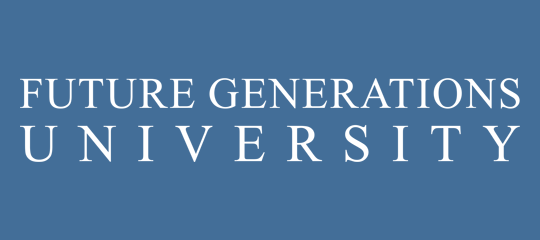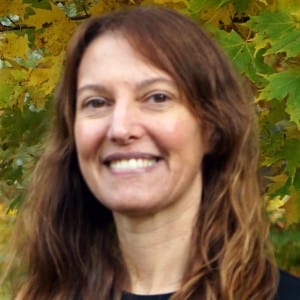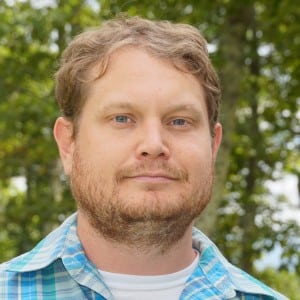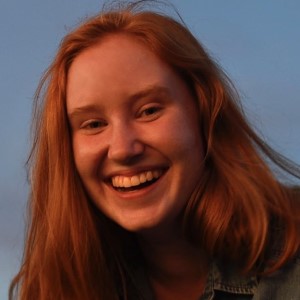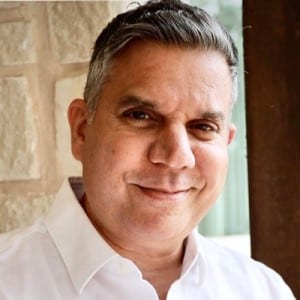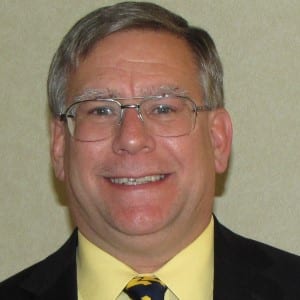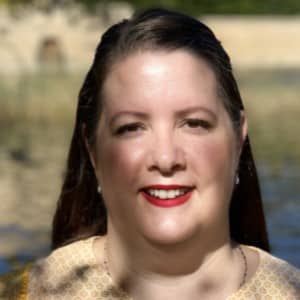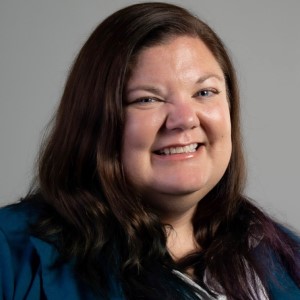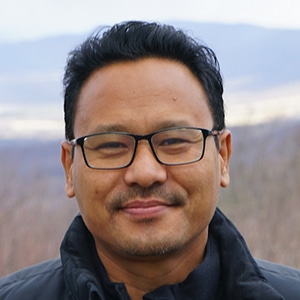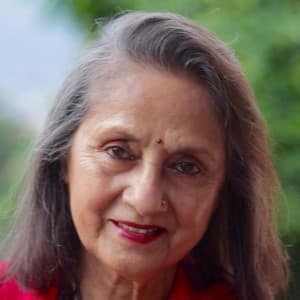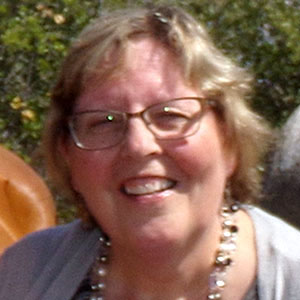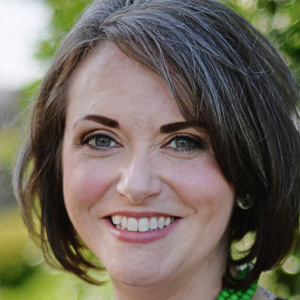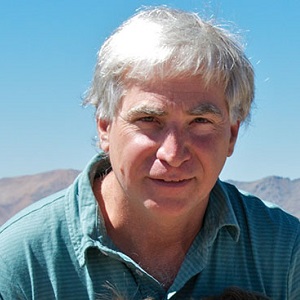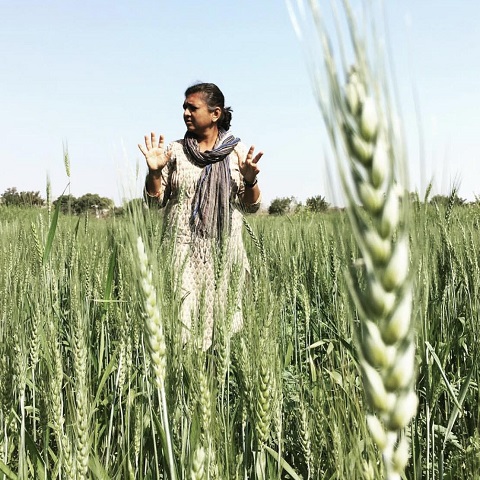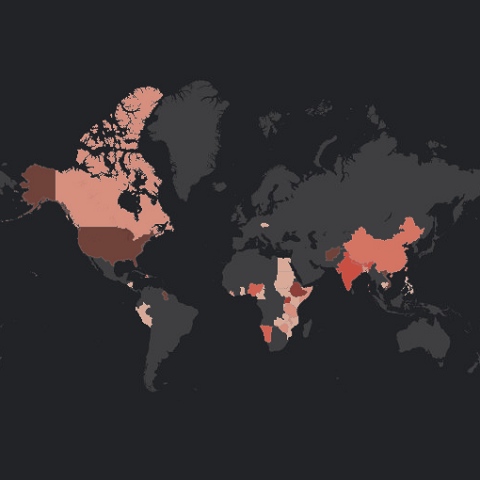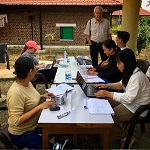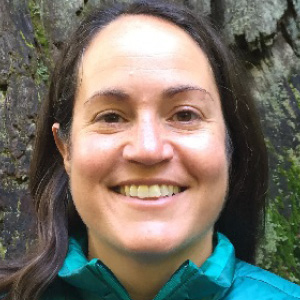Academic Catalog AY2023-24
ABBY VAN DEN BERG
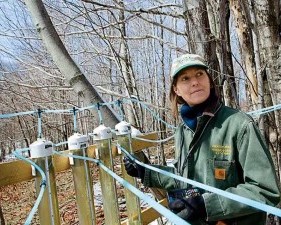
ABBY VAN DEN BERG
Associate Professor
Areas Of Expertise and/or Research
- Plant physiological ecology and maple syrup chemistry
Education
- Ph.D. 2007, University of Vermont
- Van den Berg, A.K., Perkins, T.D., Isselhardt, M.L., Godshall, M.A. and Lloyd, S.W. 2012. Maple syrup production with sap concentrated to high levels by membrane separation: effects on syrup chemical composition and flavor. International Sugar Journal 114:572-576.
- Van den Berg, A.K. 2012. Defining modern, sustainable tapping guidelines for maple syrup production. Northeastern States Research Cooperative, www.nsrcforest.org. 22p.
- Van den Berg, A.K., Perkins, T.D., Isselhardt, M.L., Godshall, M.A. and Lloyd, S.W. 2011. Effects of producing maple syrup from concentrated and reconstituted sap of different sugar concentrations. International Sugar Journal 113:35-44.
- Van den Berg, A.K., Perkins, T.D., Isselhardt, M.L., Godshall, M.A. and Lloyd, S.W. 2009. Air injection into concentrated maple sap during processing: impact on syrup composition and flavor. Journal of the Science of Food and Agriculture 89:1770-1774.
- Van den Berg, A.K., Vogelmann, T.C. and Perkins, T.D. 2009. Anthocyanin influence on light absorption within juvenile and senescing sugar maple leaves – do anthocyanins function as photoprotective visible light screens? Functional Plant Biology 36:793-800.
- Perkins, T.D. and van den Berg, A.K. 2009. Maple syrup – production, composition, chemistry, and sensory characteristics. In Advances in Food and Nutrition Research (Ed. S.L. Taylor), 56:103-144. Academic Press, San Diego, CA, USA.
- Van den Berg, A.K., Perkins, T.D., Isselhardt, M.L., Godshall, M.A. and Lloyd, S.W. 2009. Effects of air injection during sap processing on maple syrup color, chemical composition and flavor volatiles. International Sugar Journal 111(1321):37-42.
- Van den Berg, A.K. and Perkins, T.D. 2007. Contribution of anthocyanins to the antioxidant capacity of juvenile and senescing sugar maple (Acer saccharum) leaves. Functional Plant Biology 34:714-719.
- Perkins, T.D., Morselli, M.F., van den Berg, A.K. and Wilmot, T.R. 2006. Maple chemistry and quality. In North American Maple Syrup Producers Manual (R.B. Heiligmann, M.R. Koelling, T.D. Perkins, Eds.) pp 294-300. The Ohio State University, Columbus, OH.
Sweet Appalachia: Building Creative Partnerships to Promote Success in US Maple Syrup
Future Generations University Awarded Grant from Appalachian Forest National Heritage Area
CASEY WITHERS
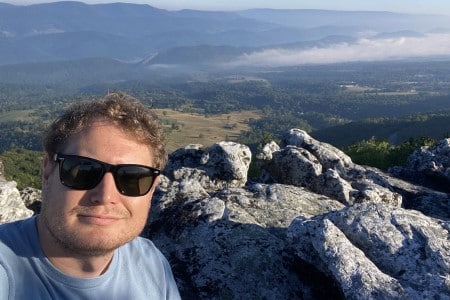
DEBORAH SOSOWER
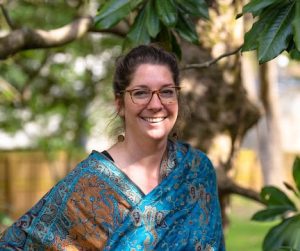
DEBORAH SOSOWER
Senior Director of Marketing & Communications
Website: www.deborahsosower.com
Education
- MFA with distinction, Pratt Institute
- BA Bryn Mawr College
- Diploma in web design, Art Institute of Pittsburgh
Deborah’s artwork uses diverse forms of printmaking, mixed-media, and performance/film to explore questions of self-portraiture and self-escapism. Her work oscillates between abstraction and figurative signs; automatic gestures to create a Modernist ready-mades and elaborate, capricious imaginings that exploit her phobias and pathos. Her work incorporates the female body, queer emotional spaces, and the codification of her fears. Deborah has exhibited primarily in Philadelphia, New York, North Carolina, Atlanta, and Knoxville.
MARGARET DONNAN
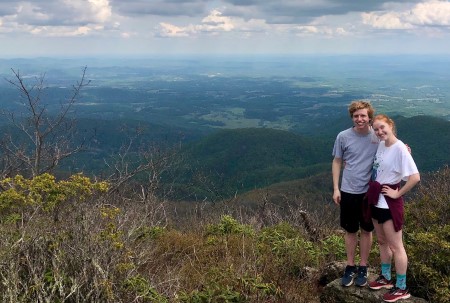
MARGARET DONNAN
Youth Education Associate
Education
- Bachelor of Science in Biology, William & Mary, Williamsburg, Virginia
In 2022, Margaret received a BS in biology from William & Mary. During her time in college, she worked as an honors fellow and research assistant in a plant ecology lab. In these roles, she conducted research centered around plant-insect relationships as well as created several guides to help William & Mary Greenhouse visitors learn more about the greenhouse plant collection. Creating these plant guides prompted Margaret to pursue more opportunities centered around science communication, education, and community engagement. Serving in capacities as camp counselor and environmental educator, Margaret has worked with youth across Appalachia to foster vital connections between the environment and today’s students.
Margaret joins the Future Generations team as the Youth Education Associate for the Appalachian Program.
Plant Ecology Research Lab, Dr. Harmony Dalgleish, William & Mary, Williamsburg, VA
Honors Fellow
- Developed and carried out an experiment investigating the interactive effects of plant size and longhorend
milkweed beetle feeding on the growth and resprout potential of common milkweed - Created several guides to help William & Mary Greenhouse visitors learn more about the greenhouse
plant collection
Research Assistant
- Ran two independent summer research projects exploring the relationship between the longhorned milkweed
beetle and common milkweed in the summers of 2019 and 2020
2022 ARISE Award: Designing and Operating Natural Vacuum Sap Collection Systems
2021 ARISE Award: Enriching Maple in Appalachia
2020 ARISE Award: Accessing South Atlantic Markets for US Maple Syrup
2023 ARISE Award: Accelerating Forest Farming in Central Appalachia
ELIZABETH FORD
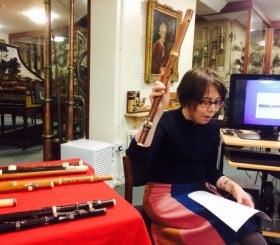
ELIZABETH FORD
Executive Assistant to the President
Education
- PhD, University of Glasgow
- MM, Peabody Conservatory of the Johns Hopkins University
- BA, West Virginia Wesleyan College
- Certificate in Irish studies, Augusta Institute, Davis & Elkins College
- Additional studies: Marshall University, West Virginia University
Elizabeth edition of William McGibbon’s complete sonatas is published by A-R Editions, representing a recreation and reassembly of a significant missing chunk of 18th-century Scottish repertoire, and her monograph, The Flute in Scotland from the Sixteenth to the Eighteenth Century, is part of the Studies in the History and Culture of Scotland Series from Peter Lang Press and has been called ‘required reading.’ She is the lead copy editor of the Aphra Behn Interactive Journal for Women and the Arts, 1640-1830. Elizabeth has been awarded several fellowships, including the Martha Goldsworthy Arnold Fellowship at the Riemenschneider Bach Institute, and the ASECS-Burney Centre Fellowship at McGill University. She is co-founder and publisher of Blackwater Press, an international independent small press based in Charleston, WV.
When not pouring over manuscripts or being escorted from libraries, Elizabeth can be found taking pointlessly long walks in search of legendary trees, reading a long book with small print and few pictures, or playing with her kitten, Flòraidh.
FRANCIS L DAY
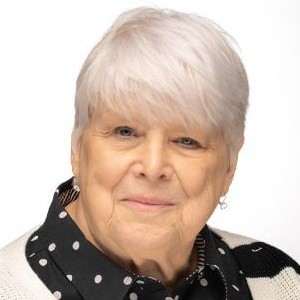
FRANCIS L DAY
President & CEO
Education
- M.A. University of Tennessee
- B.S.E University of California, Los Angeles
- Additional study, UCLA, Roger Williams College, University Without Walls
A Cluster-Randomized Trial to Test Sharing Histories as a Training Method for Community Health Workers in Peru
MELANIE JOHNSON
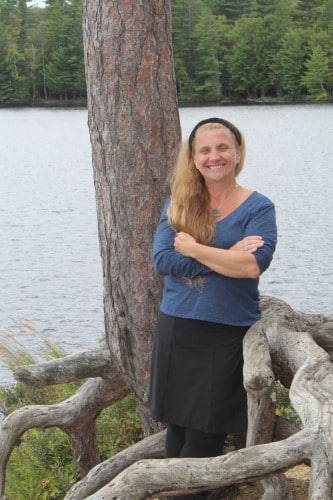
MELANIE JOHNSON
Professor
Education
- 2012 PhD. Environmental Science, University of Idaho
- 2003 MS Geology, University of North Dakota
- 1993 BS Anthropology, Minnesota State University Moorhead
Future Generations Afghanistan – Annual Report 2022
Barun Biomeridian Research Project Two Year Achievement Report
Barun Biomeridian Research Project Two Year Progress Report
Bioacoustics and machine learning for automated avian species monitoring in global biodiversity hotspots. By Zhong, M.,Taylor, R., Christey, D., Palkovitz, S., Bates, N., Dodhia, R., & Lavista Ferres, J.
SEED-SCALE Training Manual for Applied Community Change (Nepali/English)
WV Living Winter 2022, Maple Days 2022
West Virginia Maple Syrup Producers Association Newsletter 7-2019
West Virginia Maple Syrup Producers Association Newsletter 7-2018
West Virginia Maple Syrup Producers Association Newsletter 1-2019
West Virginia Maple Syrup Producers Association Newsletter 3-2023
RAJ MASIH
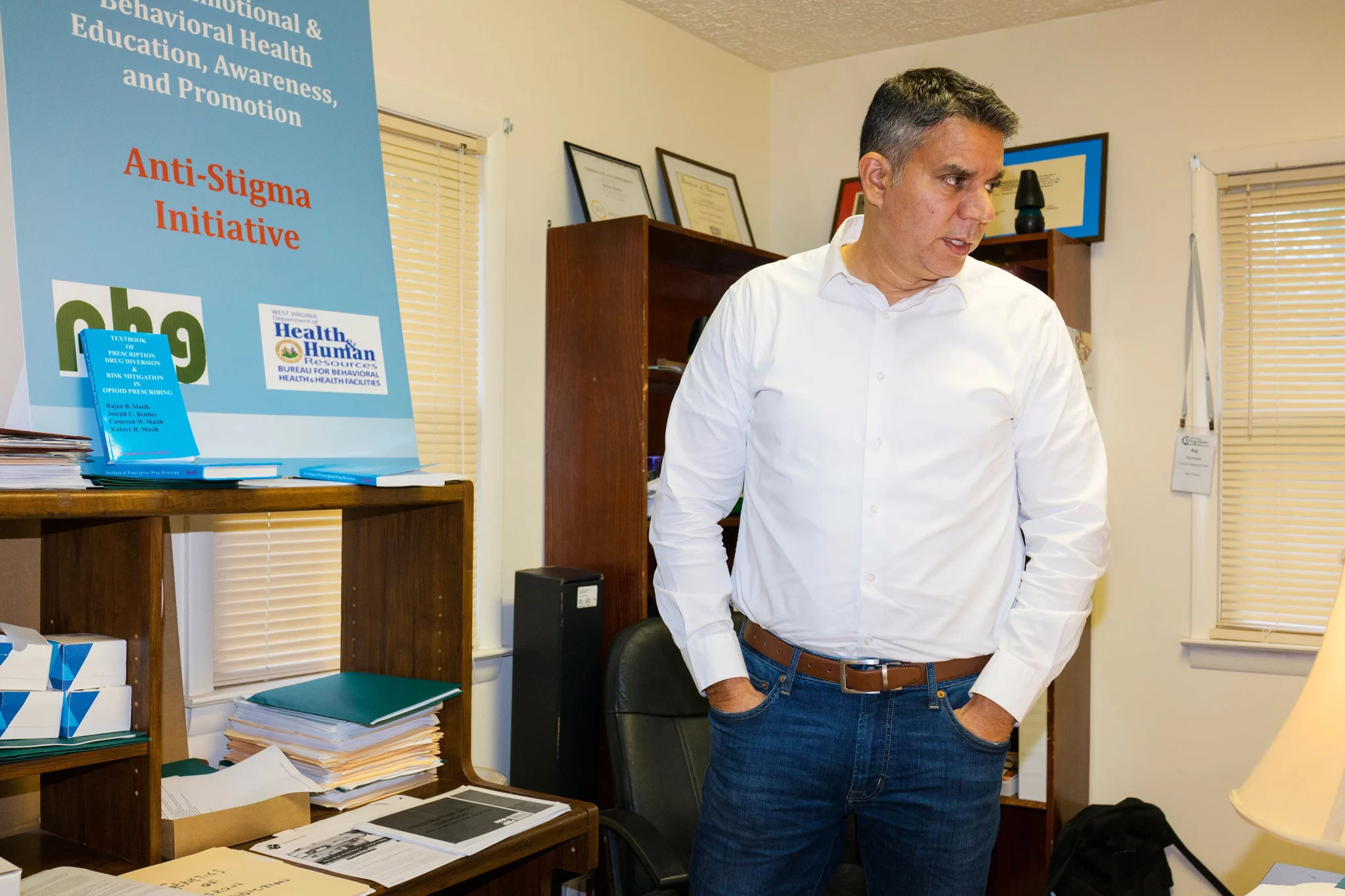
RAJ MASIH
Research Professor
Education
- MD- Panjab University
- MPH- Everglades University
- Residency- Texas Tech University Health Sciences Center
- Masih R, Rivera M. Miliary tuberculosis causing ARDS and hemodynamically proven septic shock: A surviving case. Patient Care, Aug.1998; 163-167
- Masih R, Makani A. Squirrel dinner causing acute appendicitis. Journal of Urgent Care Medicine, July 2008
- Masih R. Pachydermodactyly in poultry workers: A report of 2 cases. International Journal of Dermatology Research. Vol 1, Issue 2 2020; 23-25
- A Quantitative Statistical Analysis of the efficacy and outcomes of certified peer recovery coaches engaging people with substance use disorders in a harm reduction program. International Journal of Advanced Educational Research, 2021; 6 (1): 46-48
- Masih R., Titus T., Mathias P., Brewer M. Neuro-physiologic imaging in the context of traditional theories of human motivation. International Journal of Medical and Health Research. 2021; 7 (6): 5-10.
- Masih R., Philbrick M., Masih C., Masih B., Landis M. The Role of Phytochemicals in the Prevention and Treatment of Alzheimer’s disease. International Journal of Medical and Health Research. 2021; 7 (10): 5-9
- Masih R., Masih B., Arbaugh K., Philbrick M., Pool H., Bhatia H., Panchal K., Mongold A., Landis C. Exercise as an Adjuvant to Post Acute Withdrawal Syndrome Management in Substance Use Disorder. IOSR Journal of Sports and Physical Education. Vol 9, Issue 4 2022; 05-09
- Masih R., Masih B., Arbaugh K., Philbrick M., Pool H., Masih C., Bhatia H., Panchal K., Mongold A., Landis C., Cullers S. Correlates of the Opioid Epidemic and Entrepreneurship: Attention Deficit Hyperactivity Disorder (ADHD). IOSR Journal of Humanities and Social Science. Vol. 27, Issue 9, Series 3 2022; 51-53
- Masih R, Masih B, Rodrigues J, Mathias, P. Pharmacovigilance and Drug Safety Considerations of Loperamide as an increasing drug of abuse: a report of 3 cases and an analysis of the FDA FAERS database from 2002-2022. International Journal of Pharmacovigilance 5(1):1-5. 2-9
West Virginia Maple Syrup Producers Association Newsletter 9-22
West Virginia Maple Syrup Producers Association Newsletter 1-22
West Virginia Maple Syrup Producers Association Newsletter 7-21
West Virginia Maple Syrup Producers Association Newsletter 1-21
West Virginia Maple Syrup Producers Association Newsletter 8-20
West Virginia Maple Syrup Producers Association Newsletter 1-20
Pendelton Times_Maple Days, 3-24-2022
Pendelton Times_Maple Days 3-17-2022
Pendelton Times_Maple Days 2-24-2022
Research into Designing a Walnut Specific Spile, by Mike Rechlin, Christoph Herby, “Chip” Matheny, and Karen Milnes 2020
The Effect of Vacuum on Walnut Sap Flow, by Mike Rechlin, Kate Fotos, Christoph Herby, and Mat Cabral 2020
Walnut – Observations on The Timing of Tapping, Sap Flow Season by Mike Rechlin and Christoph Herby 202
West Virginia Sugar Operation Review Preparedness Manual & Regulatory Guidelines, By Britney Hervey Farris 2020
Rocket Stove Sap Evaporator, 2020 by Mike Rechlin and Arley Carpenter 2020
Agritourism and the Highland View White Grass Ski Touring Center Collaborative, by Mike Rechlin 2020
Tapping Depth & Sap Quantity, by Mike Rechlin 2019
Tapping Walnut Trees: Making Walnut Syrup for Fun or Profit by Mike Rechlin 2019
Tapping on National Forest Lands: A Case Study of The Mt. Rogers Volunteer Fire Department and Rescue Squad in Whitetop, Virginia, by Mike Rechlin and Tom Hammett 2019
Walnut Sap Flow and Syrup Making Field Trial, by Mike Rechlin 2019
Sycamore Sap and Syrup Field Trial, January, by Mike Rechlin 2019
West Virginia Sugar Operation Review Preparedness Manual & Regulatory Guidelines-Appendix 2019
Appalachian Maple Syrup Production Handbook 2018
3/16-inch Tubing with Check Valves Trial, by Mike Rechlin 2018
Peaceful Co-Existence with Wildlife by Hari Basnet 2023
SEED-SCALE Works! Communities Learn to Advance 2023
India Residential 2023
KEITH A. HEASLEY
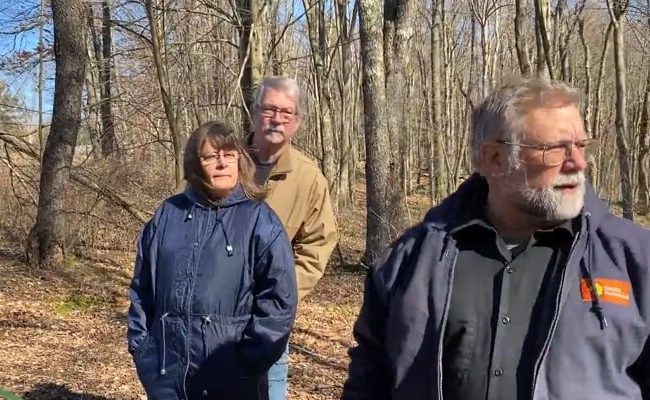
DR. KEITH A. HEASLEY
Research Professor
Education
- Ph.D. 1998, Mining and Earth Syst. Eng. (Minor-Computer Science), Colorado School of Mines
- M.S., 1988, Mining Engineering, The Pennsylvania State University
- B.S., 1981, Mining Engineering, The Pennsylvania State University
- Krog, R. B. and K. A. Heasley, 2017, “Longwall Emissions During Falling Atmospheric Pressures and the Sample Frequency Required to Detect Them.” Proceedings of the 16th North American Mine Ventilation Symposium, June 17-22, Colorado School of Mines, Golden, CO, p. XXX-XXX.
- Yang, Jian and Keith A. Heasley, “Calibrating LaModel for Subsidence,” Proceedings of the 35th International Conference on Ground Control in Mining, Morgantown, WV, July 26-28, 2016, p. 104-112.
- Newman, Christopher, Zach Agioutantis and Keith Heasley, “Introducing the New Windows ARMPS-LAM Program,” Proceedings of the 35th International Conference on Ground Control in Mining, Morgantown, WV, July 26-28, 2016, p. 98-103.
- Newman, Christopher R. and Keith A. Heasley, “Development of An Online User’s and Training Manual for LaModel,” Proceedings of the 34th International Conference on Ground Control in Mining, Morgantown, WV, July 28-30, 2015, p. 209-216.
- Li, Kaifang and Keith A. Heasley, “Calculating the Potential for Coal Pillar Bumps Using a Local Mine Stiffness Criterion,” Proceedings of the 49th U.S. Symposium on Rock Mechanics, San Francisco, CA, June 28-July 1, 2015, Paper 15-241, 8 p.
- Heasley, Keith A., “LaModel – A Program for Coalmine Modelling,” Proceedings of AusRock 2014: Third Australasian Ground Control in Mining Conference, Sydney, Australia, Nov. 5-6, 2014, 6 p.
- Zhang, Peng, Keith A. Heasley and Zacharias G. Agioutantis, “A Comparison Between ARMPS and the New ARMPS-LAM Programs,” Proceedings of the 33rd International Conference on Ground Control in Mining, Morgantown, WV, July 29-31, 2014, p. 170-174.
- Li, Kaifang and Keith A. Heasley, “Using Field Measurements to Quantify the Post-Failure Behavior of Coal,” Proceedings of the 48th U.S. Symposium on Rock Mechanics, Minneapolis, MN, June 1-4, 2014, Paper 14-7133, 7 p.
- Sears, Morgan and Keith A. Heasley, “Calibrating the LaModel Program for Shallow Cover Multiple-Seam Mines,” Proceedings of the 32nd International Conference on Ground Control in Mining, Morgantown, WV, July 30-August 1, 2013, p. 99-106.
- Zhang, Peng and Keith A. Heasley, “Initial Results from Implementing a Laminated Overburden Model into ARMPS,” Proceedings of the 32nd International Conference on Ground Control in Mining, Morgantown, WV, July 30-August 1, 2013, p. 239-247.
- Tulu, Ihsan B. and Keith A. Heasley, “Investigating Abutment Loading,” Proceedings of the 31st International Conference on Ground Control in Mining, Morgantown, WV, July 31-August 2, 2012, p. 1-10.
- Heasley, Keith A., “Calibrating the LaModel Program for Site Specific Conditions,” Proceedings of the 31st International Conference on Ground Control in Mining, Morgantown, WV, July 31-August 2, 2012, p. 1-8.
AJMAL SHIRZAI
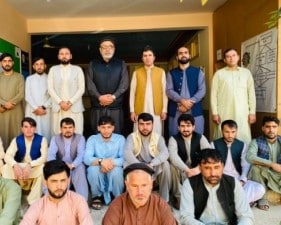
AJMAL SHIRZAI
Research Professor, Future Generations Afghanistan Country Director
Education
- Ph. D Candidate, Erasmus University Rotterdam, the Netherland
- Master of Art (M.A.), Future Generations University, West Virginia, USA
- Master of Science (MSc), Purbanchal University, Nepal
- Bachelor of Science (BSc), Kabul University, Afghanistan
During 1980s he was associate professor in Kabul University, and from 1990 – 2006 he was working in various NGOs and from 2007 to 2010 he worked as strategic planning advisor in MRRD and later as Head of Afghanistan Institute for Rural Development. Since 2011, he has been working as Country Director of Future Generations Afghanistan. Presently, he is a Ph.D. Candidates at the School of Social and Behavioral Science of Erasmus University – Rotterdam.
- Country Program Strategy of Small Grant Program (2016-2018) For Afghanistan, Global Environmental Facilities, UNDP, Afghanistan.
- Review and evaluation Report of Small Grant Program (2013-2015) of Global Environmental Facilities, UNDP, Afghanistan.
- Baseline report of USIP funded project on “Promote Social Cohesion and Cultural Competency of Badpakh Communities for Peace and Conflict Resolution at Laghman Province in Eastern Afghanistan”, USIP, Afghanistan, 2015.
- “Concept of Nutrition and Food Security”, Training Guidance for female teachers and women, French Embassy and Future Generations, Kabul, Afghanistan, April 2014
- Engaging Community Resilience for Security, Development and Peace building in Afghanistan (Research Report), Future Generations, January 2014
- “Strengthening Synergy and Coordination among Local Governance Institution in Afghanistan” Future Generations Graduation School, West Virginia, USA, April 2013.
- Review on Afghanistan Development Plans, published in MRRD’s magazine (Dekada), 4th quarter, 2010
- “Assessing Rural Development initiatives in Afghanistan”: Exploring Future Opportunities, CIRDAP, Dhaka, Bangladesh. October 2009.
- “Analysis of Causes and Dynamics of Forced Migration in Midwestern Region”, Nepal, SAIT, Kathmandu, Nepal, February 2006
- “Displacement in Afghanistan, PM paper published in book title” Forced Migration in the South Asian Region: Displacement, Human Rights and Conflict Resolution”, Jadavpur University, Kolkata, India, 2004
- “The Issues of Displacement and Internally Displaced Persons in Nepal”, Published in Charter Publication Souvenir, Rotary Club of Jawala khel, Nepal, September 2003
- “RRA Research in the Central and Northern Afghanistan”, Ockenden International, January 2001
- “Fruit Catalogue of Western Afghanistan”, Ockenden International – Afghanistan, September 2000
- “PRA Research report in Engil District, Herat province, Afghanistan”, Ockenden International, May 1999
Maple Syrup Health Benefits

Community development

Understanding the Maple Syrup Industry

Academic Catalog AY2022-23
JOEY ALOI
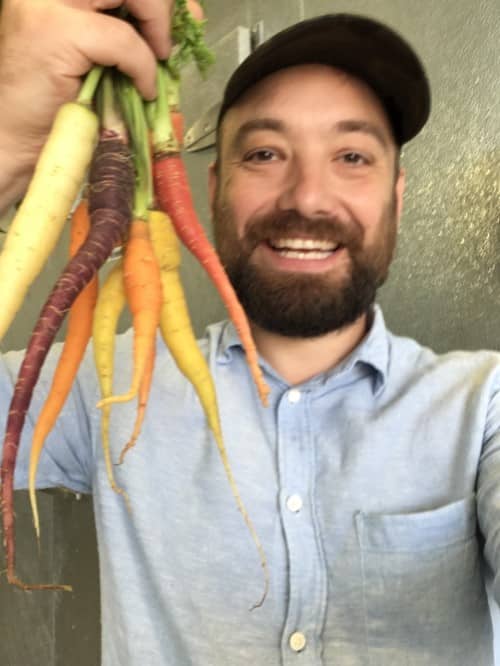
HEATHER HARPER
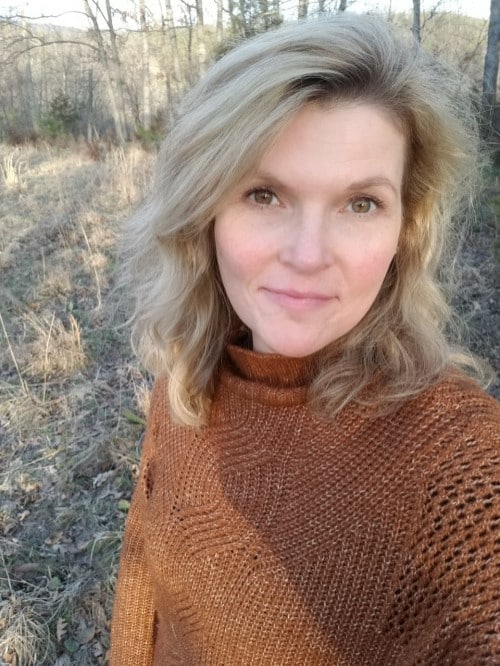
During the warmer months, Heather spends most of her free time outdoors – gardening, hiking, camping, and exploring the forest for treasures with her dog, Tucker. Once the temperature drops, you’ll find her inside – making jewelry, sewing, baking, collecting even more hobbies, or planning summer adventures.
KRIS REISER
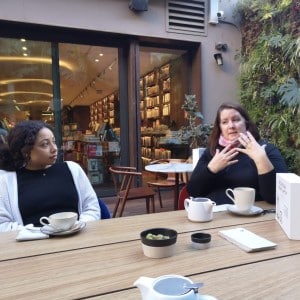
KRIS REISER
Alumni Coordinator
Education
- B.A. Boise State University
- M.A. Universidad Autónoma Barcelona
- Bianchini S., Chambellan G., Hoppert S., and Reiser K. ¨Military Intervention in Libya: The Renewal of the Tuareg’s Self-Determination,¨ (E-International Relations, 2015)
JENNY TOTTEN

JENNY TOTTEN
Strategy and Impact Manager Appalachian Program, Assistant Professor
Her professional interests gravitate towards building rural economic models, supporting youth-based programs, entrepreneurship, applications of technology to rural development, and agroforestry pursuits. In addition to working for the university, she owns and operates a small cut flower operation and is the proud owner of an endless fixer upper house project in McDowell County. In her spare time, Jenny enjoys hiking, flatwater kayaking, trail running, and traveling to find new culinary and music adventures with her canine, Oliver.
Jenny received both an MS in unmanned systems and BS in aerospace engineering from Virginia Tech and is a member of the inaugural class of Appalachian Leadership Institute fellows, sponsored by the Appalachian Regional Commission. She is a past winner of the West Virginia Beacon Award, given to young people working to build leadership in their local communities.
2021 Annual Report
SURENDRA GURUNG
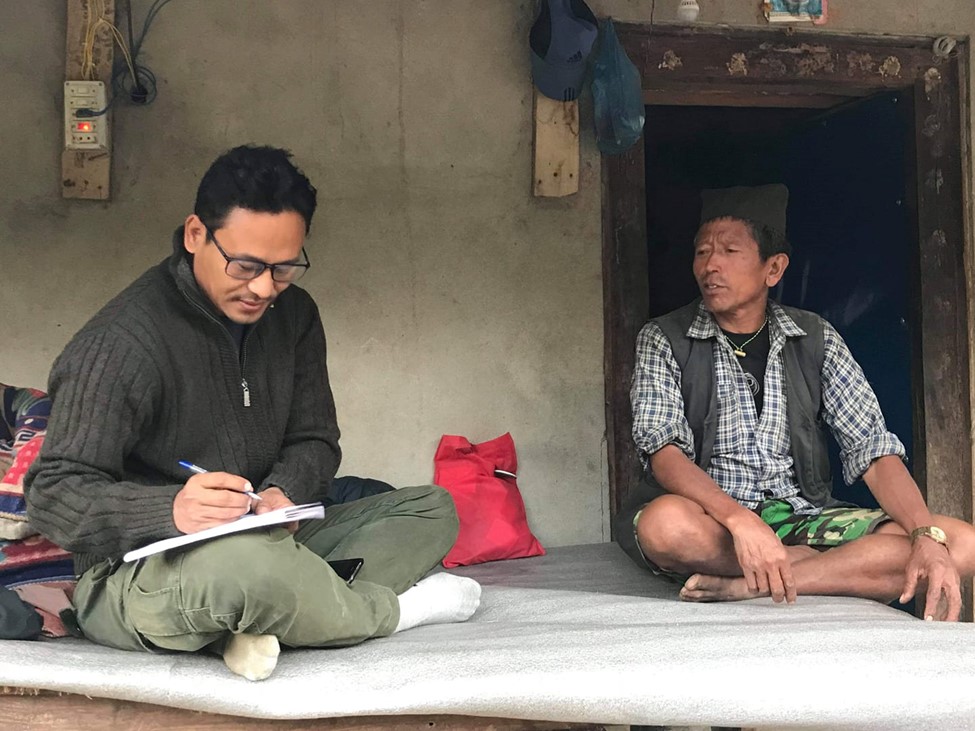
SURENDRA GURUNG
Nepal Community Engagement Coordinator
Education
- M.I.C.D. Mid-Western University, Nepal
- M.B.A. Dutch Delta University, The Netherlands
- M.B.A. Sikkim Manipal University, India
- B.B.S. Tribhuvan University, Nepal
- Gurung, S. Sustaining development in the community (Academic Thesis)
- Gurung, S. Staff motivation in the Non-Government Organization (Academic Thesis)
- Presentation on Community based approach for prevention, minimizing human trafficking and a panel speaker in Asia-Region Anti Trafficking Conference in Thailand.
- Social Entrepreneurship workshop for organizations by TEAR Australia.
- “Keeping Donors Happy” workshop on Financial Management in Thailand.
- Result Based Monitoring of Anti Human Trafficking Projects workshop in India organized by Geneva Global USA.
- Participatory Assessment of Disaster Risk (PADR) workshop by Tear Fund UK in India.
- Child Right Protection Policy workshop by Plan International/Nepal.
- Disseminating Comprehensive Peace Accord TOT by Chemonics International, USAID.
Academic Catalog Aug AY2021-22
2021 Annual Security & Fire Safety Report
2020 Annual Security & Fire Safety Report
RITA THAPA
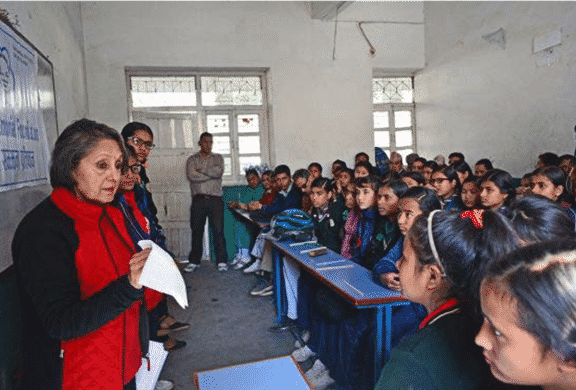
RITA THAPA
Professor Equity & Empowerment (Public Health)
Education
- M.P.H. Johns Hopkins University
- M.B.B.B., King George Medical College, Lucknow University (India)
- Thapa R, Subedi RK, Regmi G, Thapaliya R, Vaidya A, Karki BB. Self-Reported Changes in Risk Behaviours of Cardiovascular Diseases among School Adolescents in Nepal: Application of an Integrated Experiential Learning Approach. Global Heart. 2020;15(1):40. DOI: http://doi.org/10.5334/gh.818
- Thapa R. Changing Public Health Paradigm: Improving Maternal Child Health and Family Planning. Fifth Public Health Foundation Lecture. Nepal Public Health Foundation; 2014 June 30.
- Thapa, R. (2003). Manpower Development For MAternal-Child Health And Family Planning Program A- Neplese Case Study. Journal of Nepal Medical Association, 11(4), 109–126. https://doi.org/10.31729/jnma.1364
- Thapa R, Karki B. A case study on Current MDG Status in a selected poorest community in Nepal 2011. Sasakawa Peace Foundation;Tokyo 2011 August 10
- Thapa R. Integrated Health Care Delivery System Nepali Perspectives: Souvenir 23 rd All Nepal Medical Conference of All Nepal Medical Association Association 2007 November 1.
- “Health Sector Strategy-An Agenda for Reform, Nepal”, Proceedings of the Third Global Symposium on Health and Welfare Systems Development in the 21 st Century, 6-8 November 2002.
- “Health and Welfare Systems: A Regional Overview”, Report of the Global Symposium on Health and Welfare Systems Development in the Twenty-first
Century, Kobe, Japan, 1-3 November 2000. - “Making Pregnancy Safer: A Health Sector Strategy for Reducing Maternal and Perinatal Morbidity and Mortality”, Proceedings of the World Congress on Women’s Health, organized by the Federation of the Obstetrics and Gynecological Societies of India [FOGSI], Calcutta, 10-12 November 2000.
- WHO Perspectives on Making Pregnancy Safer: A Health Sector Strategy for Reducing Maternal and Perinatal Mortality in the SEAR Context”, Proceedings of the Conference of Indian Medical Association “ACADIMA 2000”, New Delhi, 20-22 October 2000.
- Safe Motherhood: Progress and Perspectives”, Proceedings of the 43 rd All India Congress of Obstetrics & Gynecology of FOGSI, King George’s Medical College, Lucknow, India, 27-30 December 1999.
- Women’s Participation and Perspectives in Health Issues”, discussion notes prepared for the Expert Group Meeting on Population and Women, Gaborone, 22-26 June 1992.
- Technical contribution to WHO’s “Women’s Health: Across Age and Frontiers”, the background document for WHO Technical Discussions on Women, Health and Development, Geneva, 1992.
- Technical contribution to WHO’s “Health Dimension of Economic Reform”, the background document for the International Forum on Health: A Conditionality for Economic Development – Breaking the Cycle of Poverty and Inequity, Accra, Ghana, 4-6 December 1991.
- Co-authored “A Preliminary Report on Prevention of Typhoid Fever in Nepal With the Vi-Capsular Polysaccharide of Salmonella Typhi”, New England Journal of Medicine, October 1987.
- Role of Traditional Medicine in the Demand of Supply of Rural Health Services”, proceedings of the Regional Seminar on the Use of Rural Health Services, Asian Development Bank, Manila, 24-25 January 1986.
- Diarrheal Diseases Research Study: Preliminary Findings on the Feasibility of Homemade Oral Rehydration Solution”, an article published by WHO Chronicle, 1980.
- Nepali Child in the Perspective of Health Programs in 1980s”, a paper presented at the Nepal Medical Association, International Year of Child Seminar “The Child in Nepal”, 14 December 1979.
- Primary Health Care in the Nepalese Context”, a paper co-authored with Dixit and Smith, proceedings of the 8 th All Nepal Medical Conference, 1977.
Women in Nepal”, an article published by the Rising Nepal, 1974. - Development of Health Manpower for FP and MCH Program”, a case study published by All Nepal Medical Association Journal, Nepal, 1974.
- Country Profile of Nepal, Daniel Taylor and Rita Thapa, Country Profiles, The population Council, April 1972 Managerial Aspects of Family Planning and MCH program in Nepal, Proceedings of the 4 th All Nepal Medical Association Meeting, 1968.
LINDSAY KAZARICK

Academic Catalog Feb AY2021-22
TOM HAMMETT
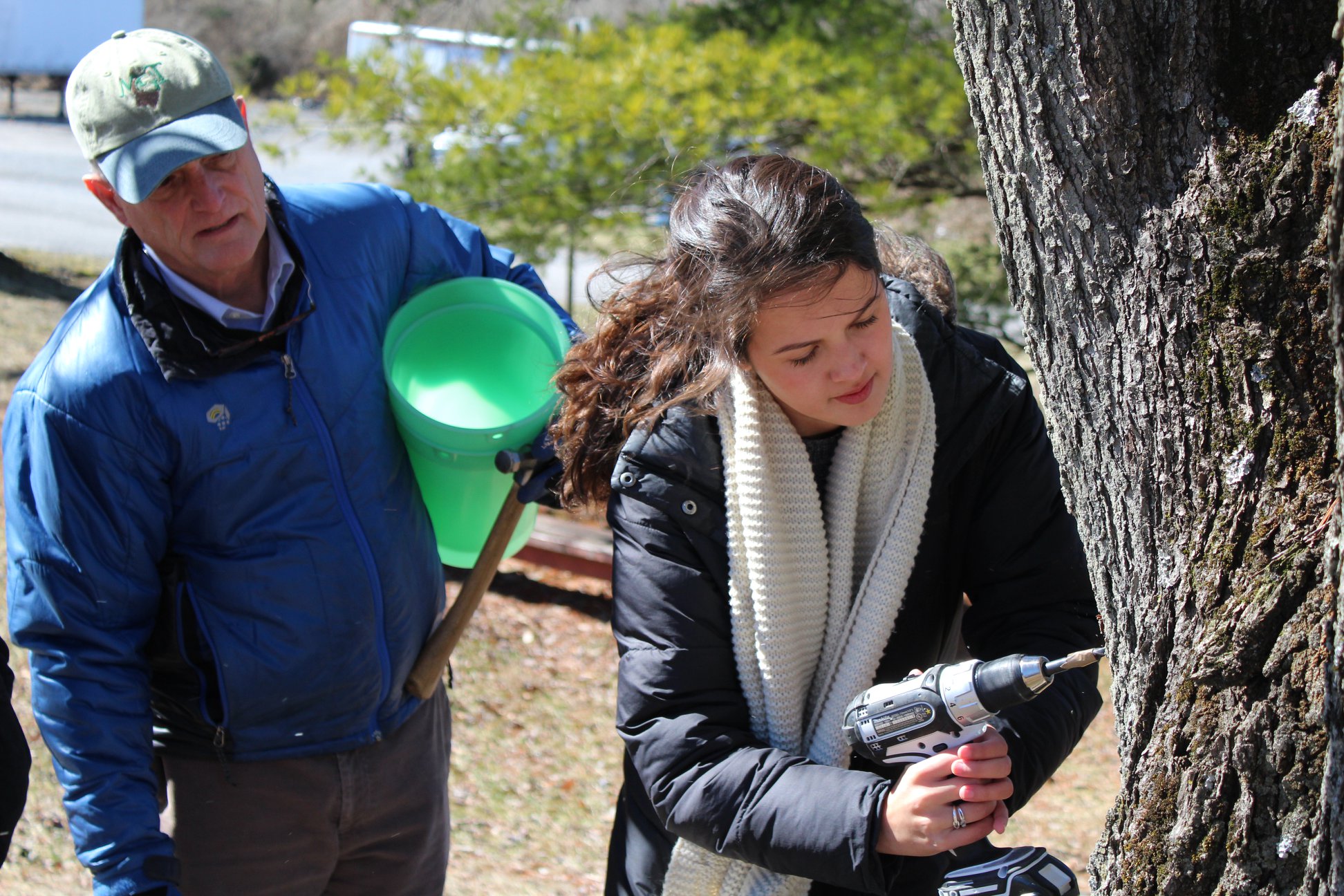
TOM HAMMETT
Research Professor
Education
- B.S. – University of New Hampshire, 1974
- M.S. – University of Georgia, 1986
- Ph.D. – University of Georgia, 1991
Tom Hammett has 40 years’ experience with non-timber forest products (NTFPs), researching means to improve landowner and entrepreneur livelihoods through production, processing, and marketing of speciality agricultural products. A Research Faculty member at Future Generations University, he also serves as a Professor of Sustainability, Innovation and Design in the Department of Sustainable Biomaterials in Virginia Tech’s College of Natural Resources and Environment and currently focuses on the use of natural materials, such as bamboo and hemp, and nature-based enterprises.
He pairs his outreach for human and institutional capacity development in agriculture and natural resources with experiences as the director of a major global agriculture training and education project. This dual skillset will help build training opportunities in agriculture, natural resources, and forest sustainability that is appropriate for the Appalachian region.
He is active participant in regional NTFP research and outreach programs. He currently serves in leadership roles in three relevant research and outreach programs: to identify success factors in agroforestry and forest farming; to develop maple syrup products and markets; and a Virginia landowner livelihood and tree syrup development program.His work as Research Faculty member with Future Generations University focuses on developing and supporting NTFP educational and research programs throughout the Appalachian region. He has worked closely with many local partners in Central Appalachia to utilize indigenous forestry and agriculture resources to address social and economic challenges.
His international experience with NTFPs will also contribute to this project. He assessedthe potential for local market and enterprise development in Asia, developedteaching and learning capacityin several countries in Africa, Central America, and Asia, anddevelopedglobal NTFP distance learning resources. His work also linkedNTFPsand ecosystem services withusing forests to cope with infectious diseases (i.e., HIV/AIDS), and developed market protocols for specialty crops and community-basedenterprises. He has publishedone book on the region’s forest products, numerous technical reports, training manuals and extension materials, and over forty peer-reviewed articles and publications.
- Oct. 1, 2020 – Sept. 30, 2023 – Co-PI for “Accessing South Atlantic Markets for US Maple Syrup”: educating consumers and enhancing distribution networks. In collaboration with Future Generation University; funded by USDA through an ACER Access Grant.
- May 1, 2020 – Oct. 1, 2921 – Co-PI for“Sharing Successes in Forest Farming across Central Appalachia; in collaboration with Livelihoods Knowledge Exchange Network; funded by USDA National Agroforestry Center
- Oct. 1, 2018 to Sept. 30, 2021 – PI for “Expanding Livelihood Options for Virginia Land Owners Through Tree Syrup Production”; Specialty Crop Block Grant, funded by USDA, through the VA Dept. of Agriculture and Consumer Services
- Visiting Professor, Agriculture and Forestry University (AFU), Nepal – March 2017 –present; develop AFU extension and outreach capacity as full land grant university
- Member, Appalachian Caucus at Virginia Tech – Jan. 2016 to present
- Eifert, Joell, Renee Boyer, Tom Hammett, Emily Pomfrey Wells, and Lily Yang. 2019. What do I need to know to sell maple syrup at the farmers market? Publication number FST-311 Cooperative Extension Service, Virginia Tech, Blacksburg, VA.
- Boley, B. Bynum, Nancy McGehee, and A. L. Hammett. 2017. Importance-performance analysis (IPA) of sustainable tourism initiatives: The resident perspective. Journal of Tourism Management. Vol. 54. Pages 66-77.
- Khadka, C. B., A.L. Hammett, A. Singh, M. K. Balla, and Y. P. Timilsina. 2016. Ecological Status and Diversity Indices of a Himalayan Medicinal Orchid Dactylorhiza hatagirea (D.Don) Soo) and its Associates in Lete village of Mustang District. BankoJanakari Vol. 26. No. 1 p. 45-52.
- Barany, Marc E., A. L. Hammett, K. Stadler and E. Kegni. 2004. Non-timber forest products in the food security and nutrition of smallholder households afflicted by HIV/AIDS in sub-Saharan Africa. Forests, Trees and Livelihoods 14: 3-18.
- Greene, Sarah M., A. L. Hammett, and Shashi Kant. 2000 Non-Timber Forest Products Marketing Systems and Market Players in Southwest Virginia: Crafts, Medicinal and Herbal, and Specialty Wood Products. Journal of Sustainable Forestry, Vol. 11(3): 19-40.
- Hammett, A. L. and J. L. Chamberlain. 1998. Sustainable Use of Non-Traditional Forest Products: Alternative Forest-based Income Opportunities. In: Proceedings of Natural Resources Income Opportunities on Private Lands Conference. April 5-7, 1998. Hagerstown, Maryland. Hosted by University of Maryland. Pp 141–147.
CINDY MARTEL
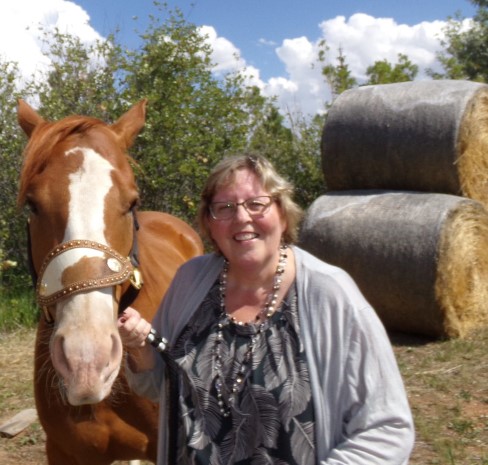
CINDY MARTEL
Policy & Regulatory Specialist
Education
- B.S. Agricultural Business (Agricultural Economics & Farm Management); University Wisconsin-River Falls, River Falls, WI
- University Wisconsin-River Falls; graduate work leading to K-8 teaching license in WI and WV (current); WY pending, River Falls, WI
- M.S. Agriculture, West Virginia University, Morgantown, WV
- Certified Travel Industry Specialist (CTIS) from Indiana University-Purdue University Indianapolis (IUPUI)
Cindy Martel grew up in the mountains of New England surrounded by buckets and maple syrup. She moved to West Virginia in 1988 and began a 25+ year stint as a marketing specialist at the state department of agriculture after hanging up her marketing director hat and whitewater guide stick in 1994. She remained connected with the outdoor recreation industry during her tenure at department of agriculture working with one of the state’s largest outfitter in marketing and logistics roles.
Cindy welcomed the opportunity to join Future Generations working on marketing and regulatory components of the comprehensive agribusiness development plan for the state’s “first” and “sweetest” crop of the season. She is excited to join the maple team at Future Generations and continue to cultivate agritourism in the Mountain State.
- Roper, C. “Sino-Vietnamese Relations and the Economy of Vietnam’s Border Region.” Asian Survey, vol. 40, no. 6, 2000, pp. 1019–1041.
- Singh-Knights, Doolarie; Martel, Cynthia. “Showcasing the Best of West Virginia Agriculture-Partnerships and Collaborations in the Agritourism Supply Chain”; 2018 West Virginia Women in Agriculture Conference
- Martel, Cindy and Singh-Knights, Doolarie. “Tap to Table: The Business of Marketing Your Syrup Business”; 2018 Southern Syrup Symposium
- Singh-Knights, Doolarie; Martel, Cindy, Rechlin, Mike. “Promoting Sustainability through Cluster Development in the Agritourism Supply Chain”; 2018 Southern Syrup Symposium
- Singh-Knights, Doolarie; Martel, Cindy, Rechlin, Mike. “Cluster Development and Collaboration in the Agritourism Supply Chain-The Mountain State Maple Days”; 2018 Extension Risk Management Education National Conference. Contributor
- Martel, Cindy and Singh-Knights, Doolarie. “A Look at West Virginia Agritourism Now and Years to Come”; 2018 West Virginia Governors Conference on Tourism.
- Singh-Knights, Doolarie; Martel, Cynthia; Eades, Daniel; et al. “West Virginia Agritourism Economic Impact Survey 2016”
- Singh-Knights, D., and C. Martel (2016). Innovation and Collaboration in the Agritourism Supply Chain – Cluster Development and Implications for Marketing. Presentation in the Proceedings of the 2016 ANREP/NACDEP Conference, Burlington, VT, June 26-29th, 2016.
- Singh-Knights, D., and C. Martel (2016). Building Viable Agritourism Operations through Business Planning and Risk-Management Education – The ‘WV Agritourism Initiative’. Poster presentation in the Proceedings of the 2016 ANREP/NACDEP Conference, Burlington, VT, June 26-29th, 2016.
- Singh-Knights, D., and C. Martel (2015). Linking Agriculture, Tourism, Economics and Education While Building Rural Communities. Research Presentation in Proceedings of the VT Agritourism Collaborative Conference – Welcoming Customers on Your Farm to Increase Farm Profits, April 7-8, 2015, Burlington, VT.
- Singh-Knights, D., Daisy Bailey and C. Martel (2015). Linking Agriculture, Tourism, Economics and Education through Cluster Development in Rural Communities. Invited Workshop Presentation in the Proceedings of the 2015 National Extension Tourism Conference, Galveston, Texas. October 27-29, 2015. Singh-Knights, D (2015).
- Singh-Knights, D., and Martel, C. (2014). Building Rural Communities through Collaborations and an Expanding Agritourism-Based Model – Agritourism, Education and Economics on your Farm. Research 8 Presentation at the Food Systems Summit, Burlington, VT, June, 2014.
- Singh-Knights, D., Martel, C., Richmond, J., Bailey, D., and Poling, J. (2014). Agritourism, Education and Economics on your Farm – Tools for Risk Management Centered Decision-Making. Research Presentation at the 2014 Women in Agriculture Educators National Conference – Indianapolis, IN, April 2-3, 2014.
Identifying Best Practices Program: Women’s Only Workshops
Community Healthy Worker Training for Women’s Empowerment in Afghanistan
Sharing Histories Human Resources Health
Sharing Histories Qualitative study Cusco
Guide to Sectorization for Community Health
Sharing Histories – How-To Guide
Sharing Histories – Health in Hands of Women Project
SEBASTIAN K. HERZOG
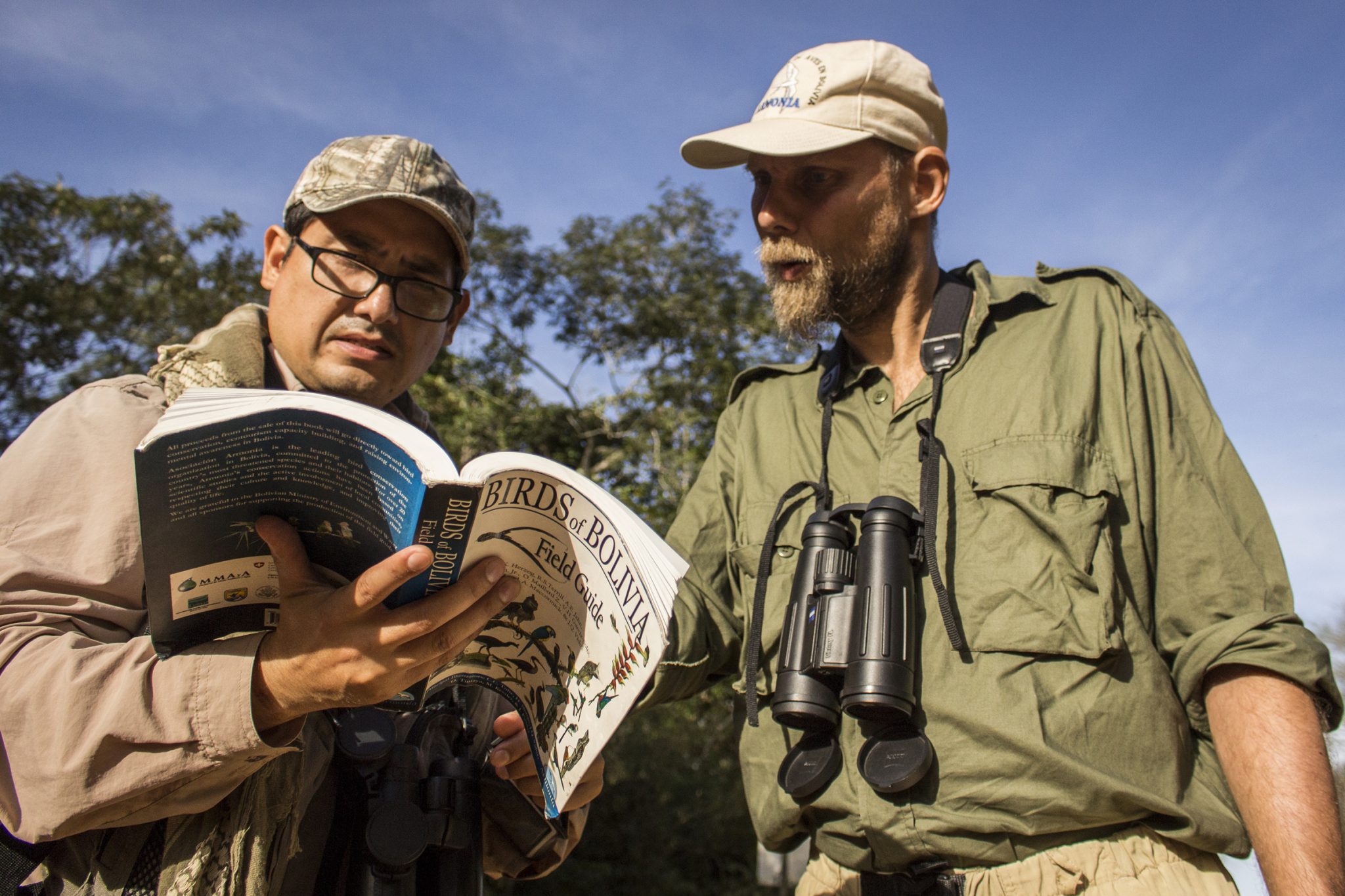
SEBASTIAN K. HERZOG
Research Professor
Education
- Ph.D. University of Oldenburg, Germany (Biological Sciences)
- B.S./M.S. University of Göttingen, Germany (Biological Sciences)
Academic Catalog AY2020-21
We Must Cultivate Our Garden
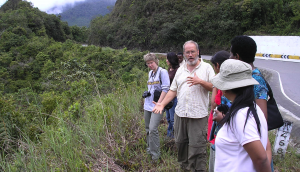
The last ten days appear to have shaken the world in general. News junkies will have been aware of COVID-19 since the beginning of the year. I made some long flights to and from in the US in late January, and I wore a face mask, even though only a couple of cases had been diagnosed in the US and none in Latin America. I was not the only one, perhaps 1 in 20 were doing it. However, the announcement of the World Health Organization on March 11 that there was an official pandemic coincided with the beginning of the drop in the stock markets worldwide. These came only a day or two after the first two positive cases were identified here in Bolivia. Bolivia announced the grounding of flights from Europe, with the last one arriving Friday the 13th in the morning.
Vincent Omara, Uganda – Class of 2017
Future Generations University is committed to empowering local people by giving them a voice and visibility. This is exactly what alumnus Vincent Abura is doing in his job at Gulu University in Uganda.
SARAH COLLINS-SIMMONS
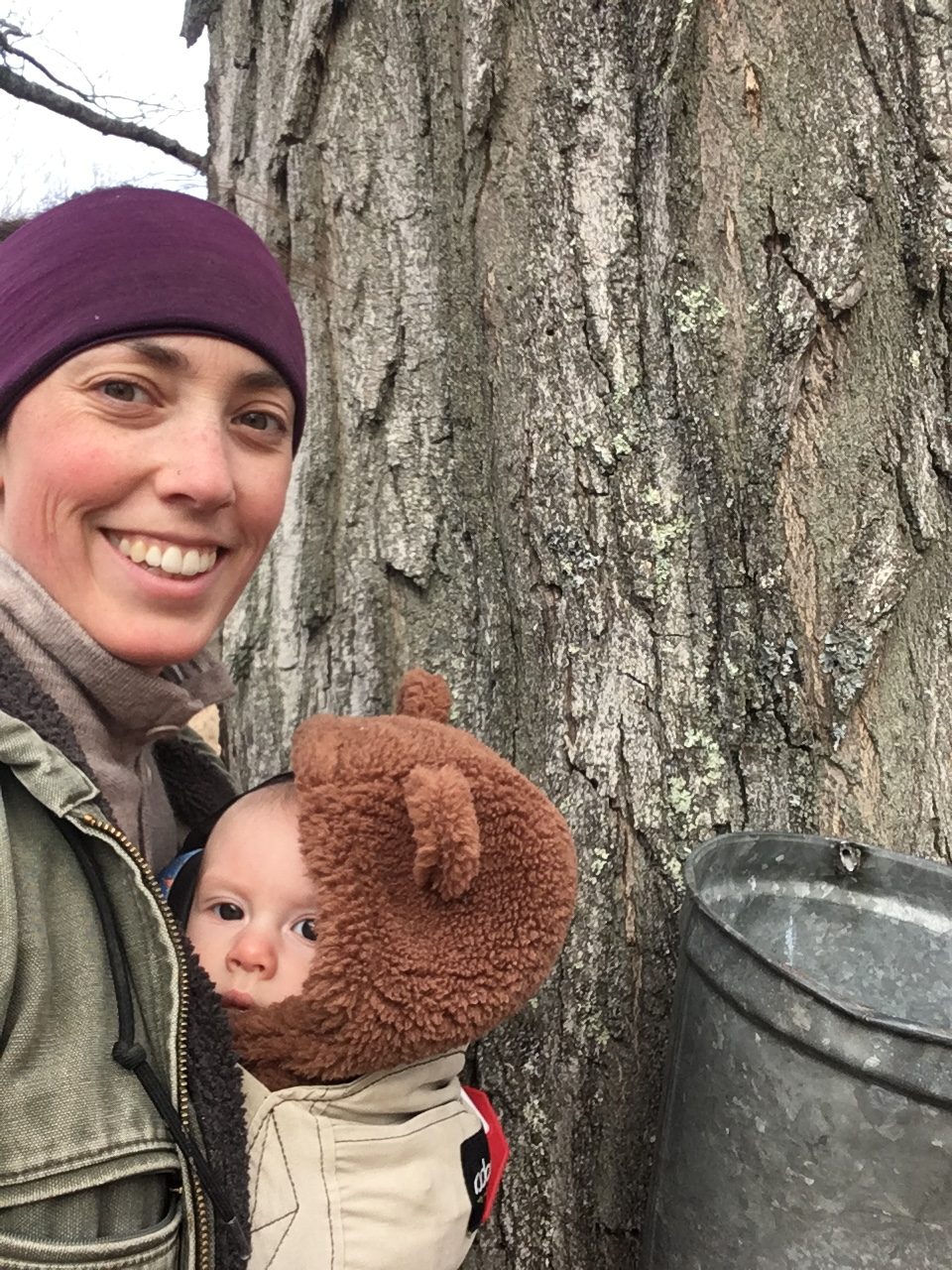
Sarah lives in Blue Grass, Virginia, with her husband, Joshua—the county’s building and zoning official, their son Everett and a farm menagerie, including dogs and goats. Together, the family enjoys renovating houses and spending time outside gardening, hiking, and camping. Sarah also makes pottery, jewelry, and baskets.
SHANNON DONNELLY
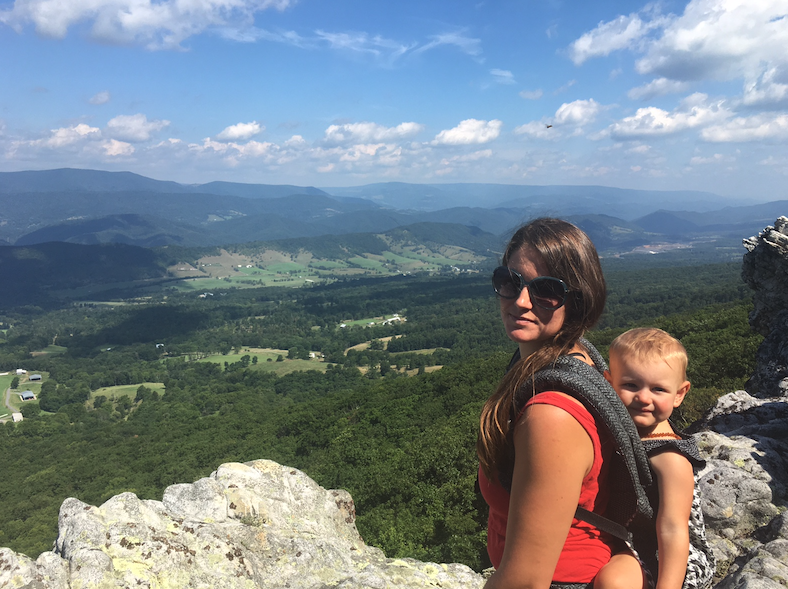
Shannon is a graduate of James Madison University, where she majored in sociology, gaining valuable insights into social factors and how they affect organizations both locally and globally. While in college, she managed to start a successful business designing and creating accessories to sell through an online platform to a niche market. This led her to 3D design and additive manufacturing, where she gained experience building small scale 3D printers and eventually brought an additive manufacturing pop-up shop to fruition in Harrisonburg, VA.
In the summers, she keeps a large vegetable garden and spends most of her free time in her kitchen, preserving the harvest and preparing baked goods to share with friends and family. She has spent the last few years raising her two daughters, adjusting to motherhood, and living a simpler, more grounded lifestyle in beautiful Pendleton County, WV. Former member USA Junior Acrobatics Team, ranked 12th in the world.
CHRIS ROPER
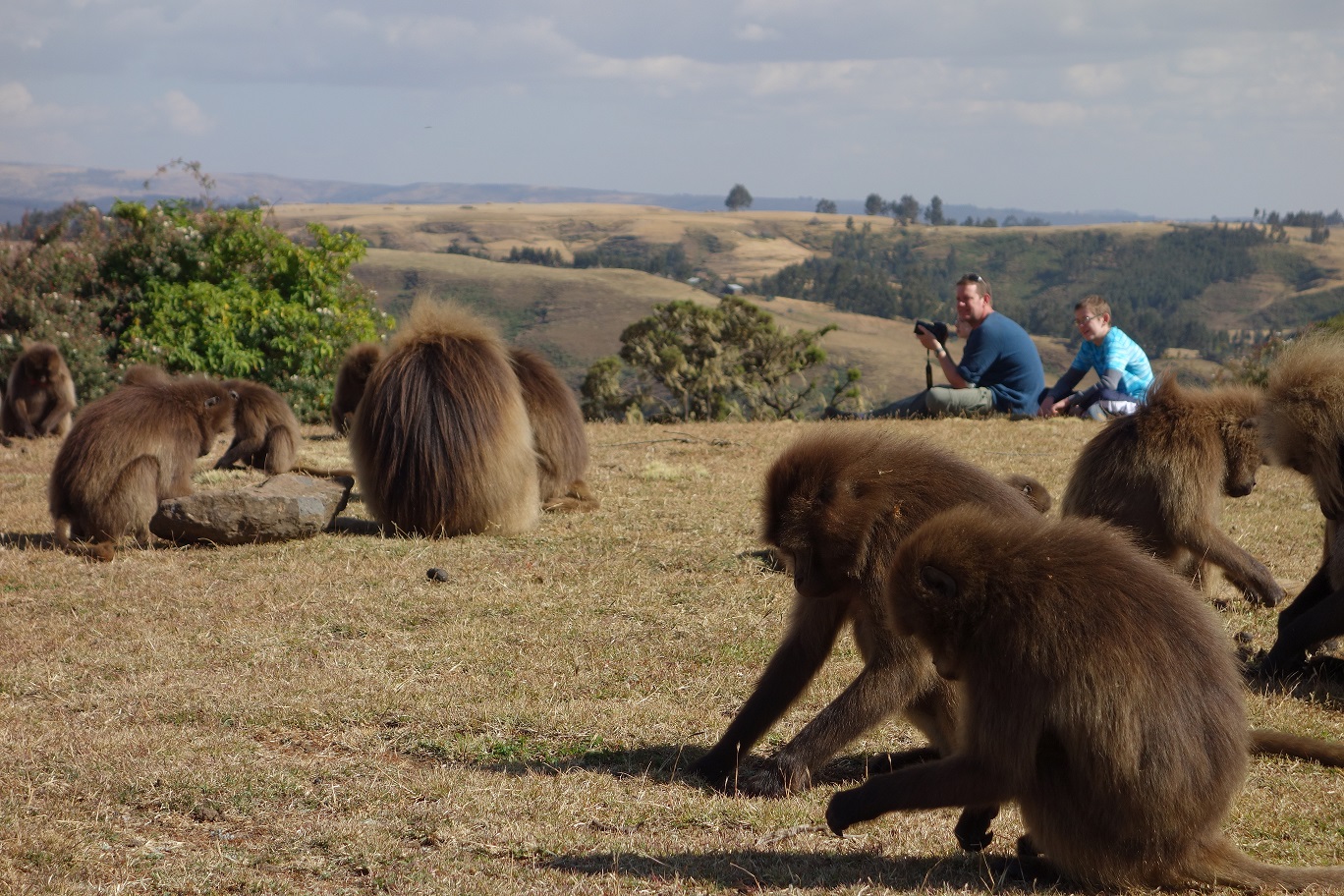
CHRIS ROPER
Director of Student Affairs
Education
- PhD ABD University of Virginia
- MA Harvard University
- BA Middlebury College
2019 Annual Security & Fire Safety Report
Academic Catalog AY2019-20
ERICKA HARNEY

ERICKA HARNEY, CAE, CFRE, GPC, CVA
Assistant Professor
Education
- Ph.D. Eastern University
- M.A. University of Kentucky
- B.S. University of Kentucky
- B.B.A. University of Kentucky
- Certified Association Executive (CAE), Conferred January 2016, Expires 2024 ASAE – www.asaecenter.org, ID#8805
- Certified Fund Raising Executive (CFRE), Conferred July 2009, Expires 2024, CFRE International – www.cfre.org, ID# 45306
- Grant Professional Certified (GPC), Conferred August 2008, Expires 2023, Grant Professionals Certification Institute – www.grantcredential.org, ID# AT080004
- Certified in Volunteer Administration (CVA), Conferred April 2007, Expires 2027, Council for Certification in Volunteer Administration – www.cvacert.org, ID# 6147
- Harney, E. (2016). Grant E-News – Issues: March. Grant Professionals Association.
- Harney, E., & Paree, S. (2015). The grant divide: Bridging the gap between the grant and accounting worlds. Journal of the Grant Professionals Association, 13.
- Various authors. (2012). The Book of the States 2012. The Council of State Governments.
- Various authors. (2011). The Book of the States 2011. The Council of State Governments.
- Harney, E. (2011). States Creating Their Own Agricultural Brands. Capitol Research Brief.
- Harney, E. (2011). A different kind of welcome center. Capitol Ideas, March/April, 20.
- Harney, E. (2011). Capitol Facts & Figures: State Contracting and Financing for Human Services.
- Harney, E. (2009). Creating impact with policymakers: Cases of building cross sector partnerships to build stronger programs and grant applications. Journal of the American Association of Grant Professionals, 7, 16-24.
- Hottinger, J., Gillettet, C., Pennings, L., Reitman, T., Shurford, E., Keating, M., Gumpert, R., Boyce, K., Harney, E., Miller, D., Cotkin, A., Fischer, K., Shiffman, J., Shook, S., & Crosby, N. (2009). Citizens Jury on Election Recounts Draft Report. Retrieved from
- Harney, E. (2009). State of Volunteers: Rising Interest in Volunteerism Benefits States.
- State News, 52.
- Harney, E. (2009), From the Expert: Grant Expectations for Competitive Stimulus Funds. State e-News, Issue #17, April 2, 2009.
- Harney, E. (2008). State Programs Find a Firmer Foundation. State News, 51(10), 34-37.
- Harney, E. (2008). What’s on Your Profile? A potential danger no longer reserved for young professionals alone. Business Lexington, April 4.
- Harney, E. (2007). Predatory lending and subprime loans”, young professionals as a target group for predatory lending. Business Lexington, September 21.
- Harney, E. (2004). Gaining volunteers: Comparing statistical versus narrative messages when recruiting new volunteers. Master’s Research Project, University of Kentucky.
- Harney, E. (2003). Finding Your Promotional Creativity: Kick the “Box” to the Curb!, Programming 101 Feature Article. Programming (National Association of Campus Activities), Fall.
- Harney, E. (2018). Grant E-News – Issues: March, June, September. Grant Professionals Association.
- May 2019: Federal & State Grants: Navigating the Process, Dayton Metro Public Library, Dayton, OH
- March 2019: Pro Panel Participant, ReWrite: Bringing Creativity to Your Fundraising and Grant Writing Regional Conference, Lexington, KY
- March 2019: Succession Planning for Chapter Leadership, International Coach Federation Global Leaders Forum, Dublin, Ireland
- November 2018: Keynote Speaker, National Philanthropy Day, Association of Fundraising Professionals, Springfield, OH
- November 2018: Vision Boards – A Creative Inspiration for Your Future, Grant Professionals Association Conference, Chicago, IL
- September 2018: The Other Side of the Application: Become a Peer Reviewer. Grant Professionals Association Ohio Regional Conference, Columbus, OH
- September 2018: Diversify the Cash Stash: Earned Income for Nonprofits, Grant Professionals Association Ohio Regional Conference, Columbus, OH
- August 2018: The Other Side of the Application: Become a Peer Reviewer. Grant Professionals Association-Greater Miami Valley Chapter Meeting
- April 2018 : Embrace Savviness! Soft Skills Are Out, Being Savvy Is In! Southern Regional Grant Conference, Atlanta, GA
- April 2018: Vision Boards – A Creative Inspiration for Your Future, Southern Regional Grant Conference, Atlanta, GA
- 2014 – 2017: Savvy Series Webinars, AFWA, Lexington, KY; Topics have included: Emotional Intelligence, Staying Relevant, Nonverbal Communications and others
- November 2017: Understanding Financial Statements without Going Bald, Grant Professionals Association Conference, San Diego, CA
- October 2017:Brand You: Personal Branding, Association of Professional Dog Trainers Annual Conference, Richmond, VA
- October 2017:Furry Funding: Fundraising and Grant Basics for Shelters and Rescues, Association of Professional Dog Trainers Annual Conference, Richmond, VA
- October 2017:Reward for Caring-Social Responsibility, Association of Professional Dog Trainers Annual Conference, Richmond, VA
- October 2017 : Grant Basics: Applying & Being Successful, VISTA training at The Plantory, Lexington, KY
- June 2017 : Board Members and Grants, Southern Regional Grant Conference, Atlanta, GA
- June 2017 :Understanding Financial Statements, Southern Regional Grant Conference, Atlanta, GA
- April 2017 : Being Savvy: Moving Past People Skills to be a Better Leader, Tobias Leadership Conference, Indianapolis, IN
- April 2017 : Presidential Leadership in the Movies, Tobias Leadership Conference, Indianapolis, IN
- November 2016 : Everyday Leadership, Grant Professionals Association Conference, Atlanta, GA
- November 2016: Vision Boards, Grant Professionals Association Conference, Atlanta, GA
- November 2016 : Volunteers Aren’t Free, Ignite Session, Grant Professionals Association Conference, Atlanta, GA
- October 2016 : Fundraising and Grant Basics, Association of Professional Dog Trainers Annual Conference, Las Vegas, NV
- May 2016 :Communicating with Your Peers, AFWA Spring Conference, Billings, MT
- April 2016 :Succession Planning as Planned Behavior: Sustaining Volunteer Leadership, Tobias Leadership Conference, Indianapolis, IN
Cape Horn and Tierra Del Fuego: The Southern tip of South America- Part III
In the eastern division, the Argentine government has promoted development by offering substantial financial inducements to people to settle and work in this region, one that diplays relatively cold weather and long, dark winter nights. A good example of the success of the plan is Ushuaia, a settlement squeezed into space bordering the Beagle Channel. Starting with a town of only around 12,000 residents the population has now increased to a city over 60,000, and as this is a port of call, or the jumping-off site, for ships heading to and from the Southern Ocean and the Antarctic Peninsula, it is bustling with visitors in the summer months. Over 200 cruise ships dock here anually.

Ushuaia City on the Beagle Channel marks the southern border of the island.
These days tourism is a major economic driving force here and records show that back in 2015 over 300,000 visitors arrived on the island, the majority (55%) from Argentina. Numerous other business activities are promoted in this eastern part of the island including extracting oil and gas, as well as peat ‘mining,’ and logging. In addition, factories that produce textiles and plastics have been constructed in economic free zones while raising beef cattle is important as this region is free of hoof-and-mouth disease.
As with most mountainous tracts, foothill areas rise up on both sides of the main spine and each altitude level comes with distinct biological constituents. In the case of Tierra del Fuego the eastern foothills of the Darwin Range lie on the dry side where the lower slopes are home to a variety of herbaceous plants including beach strawberry (Fragaria chiloensis) and calafate (Berberis buxifolia), both of which were gathered by the Yaghans for food. Stands of trees grow where conditions allow, and among these is the conifer,Pilgerodendron uviferumin the cypress family, the southernmost cone-bearing plant in the world and one often found in association with subpolar beeches, Nothofagus sp., and Winter Bark,Drimys winteri, the bark used by early travelers to prevent scurvy.
BRUCE HOLDEMAN

BRUCE HOLDEMAN
Design Program Manager
Education
- Bachelor of Fine Arts, Concentration in Graphic Design, Colorado State University
- Certificate in Developmental Practice, Regis University
- Toolpath Design, Inc-Platinum Award
- Minimum Wage Poster
- State Legislatures Jobs Poster
- Flint & Steel Sauvignon Blanc label-Silver Award
- State Legislatures National Guard-Silver Award
- Steamboat Springs Arts Council 100th Anniversary Logo-Gold Award
- Minimum Wage Poster-Gold Award
- State Legislatures Minimum Wage Poster-Gold Award
- State Legislatures Jobs Poster-Gold Award
- State Legislatures Minimum Wage Poster-Gold Award
- Rex’s Grill & Bar cycling ad-Silver Award
- Rex’s Grill & Bar cycling ad-Gold Award
- Steamboat Springs Arts Council-Gold Award
- Toolpath Design-Gold Award
- Viva Las Vegas Ice Show-Gold Award
- Steamboat Springs Arts Council 100th Anniversary
- Steamboat Springs Arts Council 100th Anniversary-Platinum Award
- Steamboat Springs Art Council-Gold Award
- Viva Las Vegas Ice Show-Gold Award
- 9.81 Films-Gold Award
- 601 Design-Silver Award
- Ristra-Silver Award
- Sweetwater Grill-Silver Award
- Lonesome Saddle
- Saddle Ridge
- Home on the Range-Silver Award
- NCSL Salt Lake City Summit Meeting-Silver Award
- Ride the Rockies-Silver Award
- State-Tribal Institute-Silver Award
- 601 Design moving promotional logo-Silver Award
- Home on the Range
- Rocky Mountain Ostrich Association-Silver Award
- 2004 Ride the Rockies logo
- Colorado Investment Casting
- Rocky Mountain Ostrich Association
- Wedding announcement
- Ride the Rockies poster
- February 2003 State Legislatures magazine
- February 2002 State Legislatures cover
- NCSL Foundation for State Legislatures
- Ride the Rockies 2002 logo-Silver Award
- Spalding Rehabilitation Hospital Christmas card
- Donor Alliance Annual Report
- October/November State Legislatures cover
- Ride the Rockies 98 logo
- Tandem Cycle Works of Colorado logo
- Ride the Rockies 96 logo
- Ride the Rockies 94 logo
- November/December 89 cover
- April 90 State Legislatures cover
- WaveMakers International logo
- Ride the Rockies 94 logo
- May State Legislatures cover
- Self-promotional poster
- Ride the Rockies 91
- Mennonite Peacekeeper Teams
- September State Legislatures cover
- Spalding Rehabilitation Hospital Christmas card
- Ride the Rockies poster
- State Legislatures cover illustration
- April State Legislatures cover
- November/December State Legislatures cover
Cape Horn and Tierra Del Fuego: The Southern tip of South America- PART II
By Professor Robert Fleming
Only a few island groups on our planet have remained mostly free of human impact and with good fortune, a portion of the Tierra del Fuego Archipelago, below the Beagle Channel, is one of these. Here lies the small (244km2/94mi2) Cape Horn National Park, which encompasses both shallow marine habitats along with the island groups of Wollaston and Hermite. Cape Horn Island itself is a miniscule part of the reserve.
Some of the islands below the Beagle Channel are treeless andexhibit tundra formations as well as alpine habitats, these often intermixed with freshwater ecosystems such as peat bogs that are repleat with species of Sphagnummosses. Indeed, the whole region is a bryophyte hotspot, especially well known for its great diversity of cold-adapted liverworts and mosses.
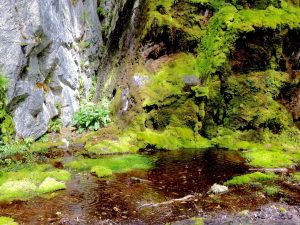
Shaded areas on islands west of the Darwin range are conducive to fern and moss growth.
In addition, other islands in the region are partly covered with a mixture of southern evergreen forests or subpolar deciduous forests. A main component of the former is the southern beech Nothfagus betuloides, and the white-flowered Drimys winteri (in the Winteraceae family). While the deciduous forests are mostly composed of the southern beeches, Nothofagus pumilioand N. antarctica.
Cape Horn and Tierra Del Fuego: The Southern tip of South America- PART I
By Professor Robert Fleming
I am the albatross that waits for you
at the end of the world.
I am the forgotten souls of dead mariners
who passed Cape Horn
from all the oceans of the earth.
But they did not die
in the furious waves.
Today they sail on my wings
toward eternity,
in the last crack
of Antarctic winds.
– Sara Vial
A world of wind, waves, and swirling spray is home to the albatrosses of the Southern Ocean, the birds a fitting symbol for the spirits of the many mariners who have perished attempting to sail around Cape Horn (Cabo de Hornos) at the tip of South America. These roiling seas hostmany oceanic birds including petrels, skuas, and shearwaters, but the primier species are albatrosses, their seemingly effortless flight beautifully adapted to the circumpolar winds that continuously blow east between 40 degrees and 60 degrees south latitude. Beneath the ocean’s surface, the Antarctic Circumpolar Current also circles east, little impeded by any land mass except where it has to squeeze through the 800km-wide Drake Passage between the Antarctic Peninsula and South America.
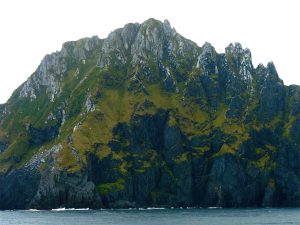
Cape Horn Island as seen when approaching from the south.
Read more…
New Structure & Job Opportunity
Future Generations is excited to announce that a new position is available with our team! We’re looking for a Future Generations University alum who can lead the effort to develop the new national campus structure of .EDU, as well as expand .ORG’s educational outreach. Interested? Click below for more details!
Bioacoustics in Bolivia
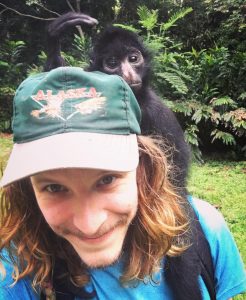
Shane with a local friend. Photo by Rommel
My name is Shane Palkovitz. I am a socioenvironmental specialist for the Songs of Adaptation research project at Future Generations University. The core investigations of this project focus on establishing an international baseline for biodiversity, while at the same time gathering knowledge from community members about human adaptation to climate change.
In March, I had the joy of traveling to Bolivia to work with local partners to establish a new research location. Our goal was to install four monitoring stations that will later serve as the beginning point for a larger research project.
We spent the first few days trekking through the jungle, looking for sites and gathering information before installing instrumentation. Pictured below, Alejo follows as other team members venture up a stream bed on El Chocolatal, an eco-resort.

Spring 2019 Newsletter
Spring has spring at Future Generations University. Read our spring newsletter for all of the fresh updates!
Spring 2019 Newsletter
2019 is off to a great start at Future Generations University! See what we've been up to so far...
Research Methods in the Real World
By Christie Hand
What is the role of research in community development? Students in the Social Research Methods course taught by Dr. Mary Hufford and Dr. Julie Maldonado have been contemplating this question for the past ten weeks as they immerse themselves in different research methodologies in a practical, applied way. Research for them is not an abstract concept but one that is critical to the success of their work in communities.
Student Rosie Lynch volunteers at the Climate Action Alliance of the Valley in Harrisonburg, VA, an organization that is currently undergoing a shift in mission from climate change education to climate change resilience. She hopes to activate a six-member exploratory committee to engage in a Participatory Action Research (PAR) study which will inform the organization’s shift in focus. As Brooks, D’Ambruoso, and Kazimierczak (2017) note, “PAR is a distinct type of research in which people with common interests engage in observing, reflecting, acting, and learning from action.” It may be difficult for Rosie to accomplish this in the scope of one course (with only six weeks remaining!), but she will have begun an important process that will benefit the decision-making process of Climate Action Alliance of the Valley.
Rosie has found this course to be particularly enlightening because the professors, Dr. Hufford and Dr. Maldonado, are experienced anthropologists and anthropology happens to have been Rosie’s undergraduate field. She says, “It has been exciting to learn how cultural anthropologists are using their ethnographic research skills to fight for environmental justice.” Rosie’s story is not the exception, but the norm in the Future Generations M.A. in Applied Community Development. Our students are in it because they care about their communities and want to learn the knowledge and skills to turn their visions into reality. That is the role of research in community development.
Instagram Superstar
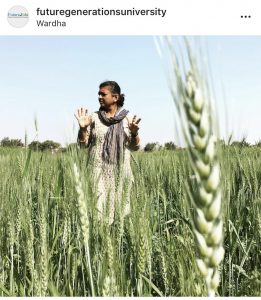 Check out this photo taken by a student while participating in our field based course, Gandhian Methods! Here, a scientist explains the innovative agricultural practices being carried out by development organization Chetana Viikas. Click on the photo to see more from our Instagram!
Check out this photo taken by a student while participating in our field based course, Gandhian Methods! Here, a scientist explains the innovative agricultural practices being carried out by development organization Chetana Viikas. Click on the photo to see more from our Instagram!
Songs of Adaptation Grows
By Shane Palkovitz
Songs of Adaptation (formerly referred to as the Biomeridian Research Network) focuses on bioacoustics and community knowledge for monitoring climate change. This expanding global project will utilize acoustic and climatic recorders to establish an international baseline for biodiversity, while at the same time drawing from community knowledge about human adaptation to climate change. In 2018, the team installed a biomeridian (transect of monitoring stations over an elevation gradient) in the Barun Valley, part of the Mt. Everest massif in Nepal. Monitoring stations were also installed in the United States at the northern and southern extremities of the Chesapeake Bay, as well as on Spruce Knob, which is the highest point in West Virginia, and at the headwaters of the Potomac River.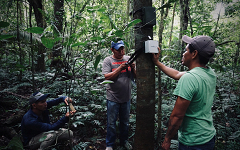
In March 2019, the project expanded to South America. Songs of Adaptation began a pilot installation near Rurrenabaque, Bolivia. This installation incudes four monitoring stations in different habitats, all within 500 feet of elevation difference. As with Nepal, local partnerships are key to the work in Bolivia; community members are involved in scientific data collection and contribute local knowledge. Team members are in early stages of designing a Bolivian biomeridian that will expand upward from the first four monitoring stations and terminate at an extreme elevation above the tree line.
Sweet Opportunities for West Virginia
By Karen Milnes
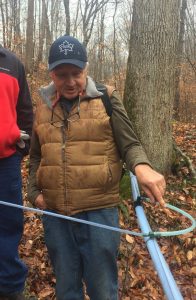
Mike Rechlin, professor at Future Generations University, gives a tubing demonstration.
Everybody knows about Vermont maple syrup, and it’s time to put West Virginia on the map. With an estimated 0.04% (USDA—NASS) of the state’s tappable maples in production, there’s a lot of room for growth. And if this industry is doing anything, it is growing. And fast. According to a survey conducted by the Appalachian program at Future Generations, the number one component in helping our state’s maple industry expand is the need for more sap from more taps.
With ongoing innovations in the sap to syrup process, a growing number of West Virginia producers are capable of processing a lot more sap than they can obtain. Backyard syrup making is not only a mountain tradition in these parts, it’s a growing hobby as the farm and food movement sweeps across our nation. The Sweet Opportunites: Tapping West Virginia’s Maple Resource project at Future Generations University aims to start networking sap collectors and syrup producers, setting up a “hub” model, already popular in more established maple syrup producing states. What’s nice about this model is that it allows, for fairly minimal overhead, just about any landowner with maples on their property and a maple syrup producer nearby, to break into the industry with little risk. Oftentimes, sap collectors simply selling their raw sap are able to pay off the collection equipment in the first year. In a relatively short time, they can begin scaling up their operations and considering purchasing larger equipment to begin producing their own syrup.
SWEET OPPORTUNITIES ARE FLOWING FOR WEST VIRGINIANS
The University has recently been awarded $130,000 from The Claude Worthington Benedum Foundation to launch the Sweet Opportunities: Tapping West Virginia’s Maple Resource program. This program focuses on expanding the production of current maple syrup manufacturers in eleven West Virginia counties.
Inspiration in India
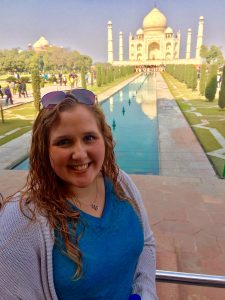
Our Learning Management Coordinator, Paula Smith, attended our field-based course in India in January. See what she has to say about the experience!
Why did you attend this field-based course on the Gandhian Method?
I was thrilled to have the opportunity to attend the Gandhi course in India. I work with the Future Generations certificate program, so I’ve helped to plan and manage this course in years past, but it was such a rewarding experience to be there in person and see all the hard work come together for a great learning experience. It helped to give me insight on how to coordinate the student experience even better going forward.
Making Maple Syrup in WV
By Mark Lambert
If you would’ve told me at this time last year that I, my wife, and our business partners would not only be producing, but delivering West Virginia Pure Maple Syrup across the state, I would’ve had to “lol.” Literally. Not just in a text or an email.

With the help of Future Generations Maple Sap Collecting and Syrup Processing certificate program, we’ve gone from wondering what our next step in the foodservice and transportation business world might be to learning how to collect sap on a commercial level. More than this, we’ve learned how to process that sap into syrup, label and bottle it for retail, and distribute not only our own finished product, but also other producers’ syrup, to retailers all over the state of West Virginia.
Alumni Feature: Melene Kabadege
Melene Kabadege is a Rwandan health professional and practitioner who attended Future Generations University as a member of the Class of 2007. A nurse with a Bachelor’s in Public Health and 16 years working for World Relief’s health and nutrition programs, Melene was seeking a way to become a true Community Health specialist.
When she met Dr. Henry Perry in 2014, a member of the Future Generations faculty at the time, and learned about the University, she realized that her dreams of bringing positive and sustainable change to her community were more achievable than she thought. She credits her education here with building her knowledge and skills in community empowerment, social change, leadership, and how to leverage and lead community successes. This empowered her to bring about lasting healthy changes in her community.
Through the Master’s program, Melene became more confident in her abilities as an agent of change and sustainable development. This inspired her to start Community Fountain Project, an NGO with the purpose of working hand-in-hand with the community to improve lives. Community Fountain Organization is currently implementing the INEZA Project, which aims to prevent under-nutrition and reduce stunting in the Kamonyi District of Rwanda.

Farmer Field and Learning School
A member of Future Generations Global Network, as are all Future Generations graduates, Melene succeeded in winning a small grant from the organization in 2017 with the purpose of implementing a Farmer Field and Learning School. Here farmers serve as teachers to their peers and join together in a farmers’ cooperative. The Project areas of intervention were: improving farming techniques, improving nutrition in the first one thousand days of a child’s life, and improving saving and learning skills. Melene’s group worked with local leaders to ensure proper project monitoring.
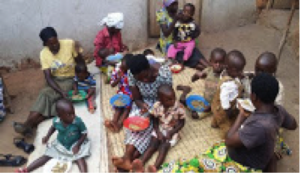
Hands-On Nutrition Session
After six month’s of project implantation, the team noted several behavior changes taking place in the farmers’ households. Notable outcomes include: couples participating in nutrition learning adopted better nutrition practices for pregnant women and children under age two, families have improved hygiene and feeding practices, men have taken on an increased role in child care, improved farming techniques have been taught and adopted, farmers have been mobilized towards the operation and maintenance of community works, erosion control plants have been put into place, and 25 saving and lending groups have been implemented that all remain operational.

Voluntary Savings and Loan Program
At the end of the first year, the program has been considered successful and highly appreciated by community members and leaders alike. The project was implemented in 3 out of 12 Sectors of Kamonyi District. Fundraising activities are currently ongoing with the aim to extend the INEZA Project to cover all sectors of Kamonyi District and to become a learning center for community partnership in reducing stunting and improving the life of the vulnerable people.
Congratulations to Melene on her impressive work, and our thanks for sharing her story!
Make sure to follow the blog for more stories on the inspiring work being undertaken by our incredible alumni!
2018 Annual Report
Link to the 2018 Annual report
2018 Annual Report
Experience our world-circling impact in the 2018 Annual Report! Keeping with our tradition of being on the cusp on innovation, this report is made available to you in Story Map format.
Future Generations Welcomes New Communications Director
We’re very pleased to welcome Susan Davis to the Future Generations University team as our Director of Communications! Susan has a rich background in storytelling, with particular expertise in the world of Public Radio. Check out her faculty bio page for more on Susan!
Want to Make a Difference?
A Master’s in Applied Community Development from Future Generations University will empower you to start creating sustainable change in your community or organization from Day 1 of the program. With flexible enrollment options and assignments tailored to fit what matters to you, we’re ready to set you up on your path to success.
Spring Classes Begin Febuary 4th!
We’re excited to welcome back new and returning students February 4th! The semester will kick off with a one-week Base Camp geared towards teaching students how to use the different technologies that together create our global classroom. During the break, many current students took part in the India Residential, which focused on teaching Gandhian Methods of social change. Be sure to check out our Instagram account to see more photos of the experience!
Remembering John Campbell
Future Generations lost a friend when John Campbell passed away in November of 2018. He encouraged us to take risks; specifically to push against the limits of accreditation policies to achieve the true purposes of learning. Although no longer physically here to encourage us, his message endures. “Do the right thing,” he said, “then explain you broke the rules because not doing so would have been a worse thing.”
We first became acquainted with John a decade and a half ago when he came as a member of the Higher Learning Commission accreditation team, sent here to inspect whether Future Generations was meeting the requirements of higher education and deserved accreditation. His job was to ‘check the boxes’ and make sure we were following the rules. What set John apart was that in checking the boxes, he was searching for achieving the higher purposes of the regulations.
John spoke at length with our president, Daniel C. Taylor, and the message he gave was that to achieve learning requires going forward, building on the resources present in the place. The place of Future Generations University is the world, with students from around the world who learn from the world … and most importantly shape their local worlds into better places. John recognized the potential in our idea, which was new at the time, and remained in contact with the school until his death.
Please join us in remembering John’s remarkable life with the following account, kindly provided by his family.

John Roy Campbell, PhD, DSC, DLitt
June 14, 1933-November 17, 2018
John was born near Goodman, Missouri and grew up on a small farm. He was the first of his immediate family to graduate from high school, and credited the receipt of a scholarship from the Sears Roebuck Corporation as the impetus to enroll in the University of Missouri-Columbia (MU). There he earned a B.S. with honors in Dairy Science from MU College of Agriculture in 1955, working three part-time jobs while doing so in order to fund his education.
Also during this time, a friend introduced him to Eunice Vieten, who shared his background of having grown up on a dairy farm. The two married and remained happily so until his passing, raising three children and later becoming grandparents along the way.
After receiving a fellowship to pursue Master of Science degree in Dairy Manufacturing, he served one year in the Army reserves, having been in the ROTC during college. Following that, he served two years of Active Duty in the Army’s Seventh Artillery. After discharge from the Army, he returned to Columbia to pursue his PhD in dairy cattle nutrition and physiology at MU. He continued serving as a member of the National Guard Army Reserves Field Artillery for the next 22 years, rising to the level of Lieutenant Colonel and Battery Commander of his unit. In 1983, John received The Meritorious Service Medal from the United States Army for his service.
Following completion of his PhD in 1960, John joined the MU Dairy Science faculty where he quickly rose through the ranks to become a full professor in 1968. He received nearly every award available to faculty members during his 17 years teaching there.
John taught several courses relating to dairy husbandry and animal sciences, and co-authored two textbooks. He viewed students as “our nation’s most valuable resource.” He wrote his book In Touch With Students: A Philosophy for Teachers (1972) to share his teaching philosophies with others.
In 1977, John was recruited by the University of Illinois as College of Agriculture Associate Dean and Director of Resident Instruction. In this new role, he demonstrated a zeal for the land-grant philosophy of higher education – providing educational and career opportunities for the sons and daughters of the working classes. He gained support from private individuals and corporations to establish a merit-based scholarship program to help recruit, recognize and support high-caliber students to pursue careers in agriculture, home economics and related professional fields. He selected the name Jonathan Baldwin Turner (JBT) Agricultural Merit Scholarship Program in honor of one of the initial proponents of land-grant universities. The program has been highly successful with alumni holding prominent positions in industry and at universities.
In 1983, John was named Dean of the College of Agriculture at the University of Illinois. Innovation, dedication and cooperation with people, both within and outside the College of Agriculture, were hallmarks of his deanship. His leadership was central to the College obtaining $61.2 million for construction of five new facilities. Colleagues have referred to his time at Illinois as “a golden era.”
John was appointed the fifteenth President of Oklahoma State University (OSU) on August 1, 1988 and served until 1993. At OSU he continued his student focus, championed international involvement and inter-university partnerships, and expanded distance learning. He resigned as OSU president in 1993 to teach in the OSU College of Agriculture and resume writing. In 1998, he published his fourth book Reclaiming a Lost Heritage: Land-Grant and Other Higher Education Initiatives for the Twenty-First Century, which has been used in teaching Honors Courses and educating others on the heritage of the land-grant system.
John retired from Oklahoma State University in 1999 and returned to Columbia, Missouri to take aim at new goals and opportunities. During this time, he served as a Consultant-Evaluator for the Higher Learning Commission/North Central Association and on the National University of Natural Medicine’s Board of Directors from 1998-2013. He also continued presenting lectures for numerous organizations. Having viewed the need for changes to increase societal perceptions of higher education, he wrote a novel titled Dry Rot in the Ivory Tower: A Case for Fumigation, Ventilation, and Renewal of the Academic Sanctuary, and another textbook, Companion Animals: Their Biology, Care, Health, and Management.
Throughout his professional career, John demonstrated a caring attitude toward and sincere interest in students, their careers, and personal lives. He had the privilege of teaching more than 12,000 students and published more than 100 papers. He accomplished much and left a legacy at each of the universities where he served.
He loved to tell stories and share the knowledge he had gained through his many journeys and discussions with people from “all walks of life” and was quick to extend congratulations to others on their accomplishments. At this time of loss, a smile comes to mind envisioning John sharing stories with those who preceded him in “graduating to heaven.”
U.S. Series- Part IV: Conservation that Respects People and Planet
Summary from Just and Lasting Change by Associate Professor, Noam Schimmel

An article in Britain’s Guardian newspaper recently suggested that as much as 50% of the planet needs to be set aside from human habitation to stave off mass environmental degradation and irreversible destruction of animal and plant species.
The intention behind this argument is a good one: to conserve the earth’s biodiversity and natural life forms.
These have their own intrinsic value, but also ultimately benefit people in ensuring that natural resources are protected rather than exploited to the point of unsustainability; that air, land, and water are protected in ways that promote public health, and that global warming and other forms of environmental harm are mitigated.
But there is a fallacy at the heart of the notion that the primary way to advance conservation is by removing people from nature.
People and nature are not necessarily adversaries. There are many examples, including contemporary ones, of people serving as successful guardians of nature, rather than as antagonists to the environment and its conservation.
The misguided notion that people and nature are adversaries has sullied conservation since the incarnation of the modern conservation movement. It needs to be acknowledged and addressed because it both hinders and slows environmental conservation and can contribute to denying the human rights of people who depend on nature for their livelihoods.
For many people, as individuals and as communities, their lives, values, and cultures are intimately and inextricably bound with nature.
U.S. Series- Part III: The Green Bay Packers: Community-Owned Energy
Summary from Just and Lasting Change by Associate Professor, Noam Schimmel

When you think about football, chances are you don’t think about community development, shared resources, a commitment to a non-profit ethos, and a cooperative approach to owning and managing a sports team.
But there is an open secret about one American football team that, while famous for the quality of its players and the passion of its supporters, should also be famous for its communitarian spirit, structure, and values.
As the Green Bay Packers By-Laws state, ‘The association shall be a community project intended to promote community welfare and that its purposes shall be exclusively charitable.”
This challenges the dominant paradigm of what drives sports in America and around the world: profit making. Sports are big business and they are, for the most part, run as big business.
But there are exceptions.
And it turns out that while the Green Bay Packers do make money what they do with that money and how they reinvest it in their community is what is so unique and notable, beyond their sporting excellence.
As Paz Magat, the author of this chapter in Just & Lasting Change, writes,
“The Green Bay Packers are one of the most iconic teams in American football, a team that has won thirteen championships – more than any other American professional football team – and a team that comes from the smallest city of any professional football team. So how is this team a charity? How does it promote community welfare? The answer is that instead of making money, the purpose of the team is winning for the community.”
U.S. Series- Part II: The Lesser Known Lincoln
Summary from Just and Lasting Change by Associate Professor, Noam Schimmel
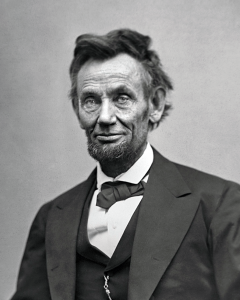
About Abraham Lincoln so much has been written it appears unlikely that there is more to say about him that might be new to readers. But, there is a part of Lincoln’s legacy that is genuinely underexplored and not widely known and it merits attention.
Lincoln was committed to advancing human development in a young United States in a way that was deeply democratic, progressive, and marshalled human resources in innovative ways that were ground-breaking and far-reaching for his time. The legacies of the policies and programs he advanced remain as defining features of American life today, and he had an animating vision of unity in diversity that informed those policies and programs.
We take the holiday of Thanksgiving for granted; it has become one of the defining features of American cultural life. Whatever one’s religion, ethnicity, politics, heritage – wherever one comes from – Thanksgiving is widely celebrated by a huge cross-section of Americans.
What many don’t know is that we owe Thanksgiving to Lincoln, who set it aside as a holiday of thanks that he had the foresight to recognize would unite Americans despite their many divisions. To this day, it continues to do so and to bind Americans across boundaries of difference, both real and imagined, small and profound.
U.S. Series- Part I: The White Mountain Apache: Reclaiming Self-Determination
Summary from Just and Lasting Change by Associate Professor, Noam Schimmel
An Example of SEED-SCALE in Arizona
Seed-Scale has been used by Native American communities to explore and assess their communal needs and resources and to advance development that stems from the community and reflects its needs and preferences.
The White Mountain Apache of Arizona have historically had mixed experiences of government neglect as well as government support, with government support often creating unsustainable relationships of dependency that undermined dignity and freedom.

Daniel Taylor reflects upon the history and culture of the Apache of Cibecue Valley:
“The two thousand Apache of the Cibecue Valley, in eastern Arizona, are the most isolated members of the White Mountain tribe. A high percentage of the people still speak the Apache tongue, and they try to keep the older ways alive. Older residents tell of idyllic childhoods spent in the forests with deer and other wildlife as neighbors, when Cibecue Creek still abounded with trout and beaver. They tell of times when women spent their days collecting plants for food and medicines while men and children spent their days on horses. Young people are encouraged to learn traditional stories, dances, and handicrafts and to take an active part in rituals that strengthen tribal identity and values.”
Attend a Virtual Info Session with us
Want to learn more about what Future Generations University is all about? Attend one of our upcoming virtual information sessions to find out! Sessions will be held at two separate times with our Chief Academic Officer and a Specialization Director. They’ll answer all of your questions and fill you in on the unique opportunities presented by a Master’s education here!
Rookie Producer’s Take on the Southern Syrup Research Symposium

How many of you know about Future Generations University’s maple syrup program?! Check out this blog by the West Virginia Maple Syrup Producer’s Association’s own Tina Barton and see what she had to say about the related symposium she attended!
Read here: https://wvmspa.org/2018/10/06/rookie-producers-take-on-the-southern-syrup-research-symposium/
Bending Bamboo
By Katie Larson
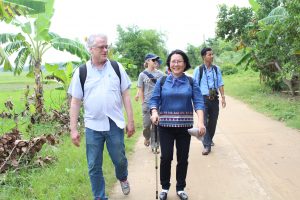
When do we learn about sustainable development?
How do we learn about sustainable development?
Who is this we that I keep mentioning?
Is sustainable development only a topic for development professionals?
Even if we learn about sustainable development as children, which children get access to the “juicy”, life-changing content, produced by the United Nations, climate scientists, and development professionals?
If you speak English, you can easily access this “juicy” content. If you are confident in English, you can go further and sift through this content. If you have cultivated your critical thinking skills, you can go even further and compare the content you are reading with the reality of sustainable development in your context.[1] Think Bloom’s Taxonomy. Then think about how English fluency fundamentally impacts who gets access to the knowledge critical for understanding and meaningfully supporting the health of our changing planet.
Now, what if you are not confident in English? Imagine that you can’t sift through the many amazing resources available on sustainable development. Maybe the only content you can access is general information. You know what I mean, the information that explains that if we drive our cars less then we can stop the polar ice caps from melting and save polar bear habitats. Two very important issues to solve, yet, superficially examined and far from many people’s day to day realities.
Those of us in the development sector know that sustainable development has many definitions and that its diverse definitions, applications, and manifestations are a result of complex contextual realities. Yes, sustainable development is certainly a concept to associate with solutions to climate change. However, sustainable development as a solution must be understood in context, in a way that values local economics, health, infrastructure, and all of the other important topics of the United Nations Sustainable Development Goals.
Here is where the study of language and the study of sustainable development are similar. According to the Communicative Approach in language learning, when learning how to communicate in another language, the learner’s context matters. Imagine you are a 10th Grade student living in rural Vietnam with a high likelihood of never traveling outside of your country. You go to English class (a required subject) and open up your textbook (published in London) and scan the lesson. The lesson asks you to imagine you are discussing your recent trip to Piccadilly Square in London. What did you see? What did you eat? How were the British people? Now ask yourself, am I going to be engaged in learning how to communicate with this kind of content? Also ask yourself, will this lesson give me skills for a future career? Students who cannot link content to context and who see no relevance in learning about things they don’t think will help them in the future, are not going to seek greater fluency in a foreign language. With content unconnected to context and irrelevant to the student’s future, English language study becomes a tool only for those few students who think they will travel and/or find employment outside of Vietnam. But the truth is, English is a global language. It can be used in rural and urban Vietnam to connect people, business opportunities, science, and funding from around the world. It can also be used to foster international collaboration on sustainable development solutions for communities.
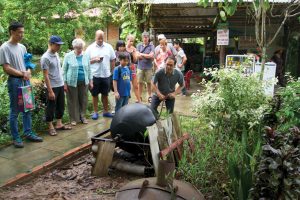
The process is the same with sustainable development knowledge acquisition. What if the content you access is tooooo unconnected to your context? What if you don’t have the English skills to sift through the content? What if you don’t have the critical thinking skills to compare and contrast content with context? Will your sustainable development education equip you to visualize sustainable development in your context? For many, the answer is no. Arctic ice problems are important. However, if they are presented as an isolated challenge, they will seem like frivolous topics of study for someone living in a tropical river delta…say the Mekong River Delta. And those of us fluent in sustainable development know just how connected the ice caps are to our oceans and the river deltas that neighbor oceans. With superficial sustainable development education, students exit school without understanding the ways in which their actions and future careers might help or hurt Earth’s ecosystems.
Now, I have a BIG question regarding English fluency as a tool to access, sift through, and critically think about sustainable development. Can we drive English language acquisition while driving sustainable development knowledge acquisition?
This is a question that Bending Bamboo is trying to answer.
What is Bending Bamboo you might ask? Bending Bamboo is a process for acquiring intercultural, communicative, competence, confidence and collaboration (iC5) skills in English and sustainable development. Bending Bamboo does this by connecting English and sustainable development to context. It currently operates in Can Tho, Vietnam – the hub of the Mekong Delta. Over a two-year cycle of workshops and online forums, Mekong Delta teachers and professionals work together to acquire their own iC5 skills and then create a curriculum that teaches these iC5 skills to their students and employees. The first deliverable of this cycle is a teacher text. The next is a student text. Both incorporate local research on sustainable development in Vietnam and South East Asia. Both incorporate the knowledge of the teacher, farmer, tour guide, and corporate professional. They both seek to support English language and sustainable development knowledge acquisition.
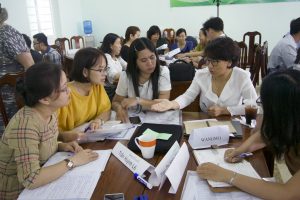
In its most recent workshop in July, Bending Bamboo began to visualize a concrete answer to this BIG question.
During 60 hours of workshop learning, participants were introduced to sustainable development information and stories from local and global perspectives, in English. Local and foreign experts were brought in to share their science with the participants, in English. As proficient English speakers already, the participants could sift through the content of the workshop. Tasked with reviewing and comparing sustainable development content from here and there, teachers also cultivated their critical thinking skills. For 18 participants, this was their second Bending Bamboo workshop. For these 18 participants, post-workshop evaluations showed that both their communicative English confidence and sustainable development knowledge confidence grew!
That’s good news. Bending Bamboo participants are citizen-leaders in the Mekong Delta of Vietnam. They are knowledge bridges for their communities. These citizen-leaders are now critically interacting with local and global sustainable development discourse. Even better, these citizens are, inherently, strategically positioned to spread their knowledge. Bending Bamboo is currently leveraging this strategic positioning through the collaborative creation of the Bending Bamboo Teacher Text for grade 10-12 teachers in Vietnam. Next is the collaborative creation of a Bending Bamboo Student Text for Grades 10-12. With these two tools, participants and the Bending Bamboo team can tangibly impact a student and citizen’s ability to access and meaningfully engage with sustainable development discourse.
As Bending Bamboo continues to answer, through data, its BIG question, it also eagerly and intentionally looks forward to answering the next question. It is a BIG BIG question. Can the integrated Bending Bamboo curriculum not only drive communicative English and sustainable development knowledge acquisition, but also drive sustainable development action?
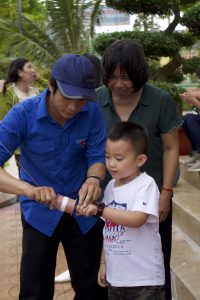
Now, just for fun, I shall end with two more questions. These are BIG BIG BIG questions to get you excited and thinking about the potential of creating and implementing, context-driven, quality education. Approximately 50% of Vietnam’s population is under age 25[2]. What happens when Vietnamese youth are confident in integrated iC5 skills for English and sustainable development? What impact will this rising generation of Vietnamese citizens have on their provincial, national, ASEAN, and global communities?
[1] Interested in this statement? Read: Powell, Mike (2006). Which Knowledge? Whose Reality? An Overview of Knowledge Used in the Development Sector. Development in Practice, 16(6), 518-532.
[2] From the General Statistics Office of Vietnam
Development Series- Part IV: Advancing Human Development in Kerala, India
Summary from Just and Lasting Change by Associate Professor, Noam Schimmel
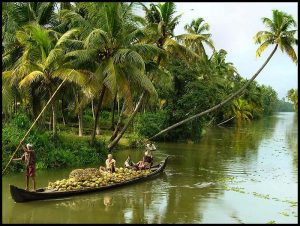
Human development that significantly advances quality of life does not have to be expensive.
It is often assumed that to make major advances in the quality of human well-being development efforts that address healthcare, education, food security, and the well-being of women and children are necessarily extremely resource intensive and therefore dependent on massive outlays of funding to advance human security.
But this is not the case.
Successful forms of development that have been transformative in positive ways and are well documented in development literature show that human well-being can be advanced with basic resources that can be found in most communities, including in countries that lack financial resources and are classified as low income.
Put simply, financial wealth is not a prerequisite for fundamental human development.
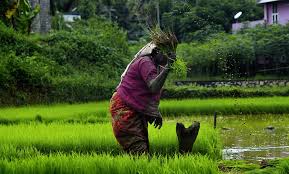
More significantly, trust, cooperative communal efforts to pool resources and expand them, careful and equitable planning, and support of local and national government coupled with local grassroots efforts are often sufficient to advance human development.
These advances lead to tangible improvements in life expectancy, improve quality of life and enhance health outcomes, promote the realization of the human rights of children and women and human rights more broadly, expand educational opportunities, and raise incomes and improve food security.
How is this possible and where has this been done? In Kerala, India.
Kerala, a region of South India, made huge advancements in human development without being dependent on external aid for enabling this transformation.
Kerala achieved the best health and education levels of development in India already by the 1960s, and continues to sustain them, while also maintaining the highest rate of political participation in India.
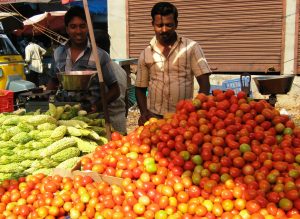
But, counterintuitively, it was also the poorest state in India when it had these dramatic health and education achievements.
In this seeming contradiction we can find vitally important lessons about advancing human development which may be counterintuitive, and for that reason merit attention.
Development research attributes Kerala’s outstanding social achievements to several factors.
Daniel and Carl Taylor, pioneers of community development together with UNICEF, explain that these include political leadership that was largely genuinely interested in advancing the welfare of Kerala’s residents and was not morally corrupt, a matrilineal tradition amongst many high caste Hindus in Kerala, a church that grew in adherents and advanced greater equity amongst its values and aspirations and promoted interreligious tolerance that also received the support of Hindus, and a progressive people’s movement that advanced social reforms.
According to Taylor and Taylor, this social movement initially fought back against caste-based discrimination but continued beyond that, advancing public literacy and education, promoting land reform, and making scientific knowledge broadly available to the public which has also played a role in public advocacy for continued environmental conservation.
Momentum built on momentum in positive interlocking ways: advancing women’s rights, promoting expanded educational opportunity, and providing enhance economic opportunities for trade that were open to a broad cross-section of the population all acted synergistically to advance human development.

The high literacy rate, for example, has enabled the average Keralan to follow newspapers and hold political leadership accountable in democratic elections and in between elections.
The evidence Taylor and Taylor provide is substantive and significant: In 2001 while life expectancy was 74 years in Kerala it was 59 years in all of India. Literacy in Kerala amongst females was 87%, while it was only 39% in all of India. In 2011, Kerala was the only state in India in which there was no preference for male babies; in 1991 its gender ratio was 1,036 females to 1,000 males, compared with 927 females to 1,000 males for India as a whole.
Kerala’s successes are impressive, sustained, and genuinely life altering for individuals and for society.
Taylor and Taylor note that economic wealth did eventually result from these substantial advances in human development in Kerala.
Today Kerala enjoys both high levels of social development and economic growth and greatly increased financial resources.
It is instructive to turn to Kerala’s history to learn that opportunities abound even in places that are initially resource-poor.
Human development can be enabled and derive energy from largely indigenous sources.
To be sure, Kerala’s model is unique to Kerala and its circumstances.
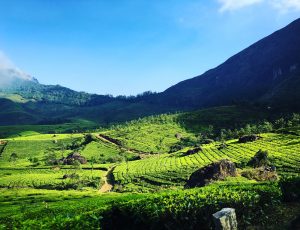
But undoubtedly, it has lessons for all countries seeking to advance human development and to the United States and other countries when conceptualizing and implementing development aid.
These lessons are encouraging in their affirmation of local capacity to advance positive social change from within that draws upon domestic human resources, some – but relatively moderate support from abroad, and the values and social policies that advance equity, social justice, and human emancipation which ultimately can unleash human development and well-being.
Development Series- Part III: SEED-SCALE in Nepal
Adapted from Empowerment on an Unstable Planet: From Seeds of Human Energy to a Scale of Global Change, by Daniel Taylor, Carl E. Taylor, and Jesse O. Taylor

(All photos throughout post taken from various Future Generations activities in Nepal.)
Traditional development has not dealt kindly with Nepal and has not succeeded despite huge investments of both human and financial resources over many decades.
If the best current development practices were effective, then they should have worked in Nepal. Six decades, several billion dollars, and the careers of some of the world’s finest development professionals were invested in the kingdom to reduce poverty, illiteracy, and illness. Yet today, 30 percent of Nepal’s population remains below the poverty line, with one-fifth of the country living on less than a dollar a day; half the population is illiterate, and mortality for children under age five is sixty per thousand live births.
How is this possible and what were its causes?
There were plenty of good intentions in all the right places. Economic growth was to reduce poverty. Education and elections were to build accountable government. Health services were to double life expectancy. For each, targets were set, and programs were generously funded. But while there was progress in many measurable program indicators, in each sector dysfunction grew in terms of how system relationships were functioning. Programs that were started fell apart when funding was diverted to other programs that interested donors. Newly built school buildings and schools a few years after being built by donors looked abandoned.
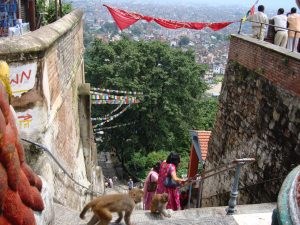
This dynamic is not unique to Nepal. Indeed, it characterizes the failures of traditional development programs around the world which Nepali development projects typified.
Intentions were good, outcomes were not.
Looking at Nepal as a case study helps to understand why community-based development that is genuinely communally oriented and involves real local participation and implementation is far more likely to succeed and be sustainable than traditional development projects reflecting huge, external outlays of cash and foreign expertise, but without local participation.
Without an integrated role for the Nepali government on national and regional levels to work in a three-way partnership both with local Nepali communities and with external development and aid agencies – and the resources and expertise they bring – development in Nepal was not sustainable.
The Taylors argue that although Nepal lacked financial and human resources initially, in the 1950s, when development projects began, Nepal actually had access to extensive financial and human resources available since that time, for over sixty years. In other words, the failure of Nepal’s development trajectory is not because development was working and was simply underfunded and/or not sufficiently expanded across the country. The problem was and remains that it was not working effectively, and it was not responsive to community needs.

According to the Taylors, by 1999 the bottom fifth of Nepal’s population suffered from greater poverty, malnutrition, and lower overall human development than in 1949. Traditional development programs implemented during these fifty years did not consider how the Nepali economy in the 1950s and through the 1990s was systematically excluding a huge sector of the Nepali population.
The core reason why the quality of life had gone down for the bottom quintile was that the currency of change had shifted. In 1949, a barter economy based on human energies gave employment options to poor people; but by 1999 the monetary economy had removed labor-based options; money was now required to participate in the modern world.
Had traditional development efforts been sensitive and responsive to this reality and the challenges it created for one fifth of the population, Nepal’s development trajectory would likely have been a much different and better one.
But they were not.
Further, even the development efforts they pursued that reached some of the remaining 80% of Nepal’s population, had relatively poor results and often ended in neglect or desertion because they did not link local communities in a meaningful, participatory way with the regional and national government and with foreign aid agencies and were not communal oriented.
Pockets of development would often take place in an isolated, temporally-bound manner creating the illusion of development momentum and positive change. Once the money and human resources stopped coming in, the development projects ended, development indicators declined, and local communities had neither gained in capacities nor resources to advance their own development and sustain it.
By definition, a program of development that relies primarily on external support and that does not reflect local communal needs and participation will eventually peeter out when funding ends and when human resources experts complete whatever block of time they have committed to a particular development project and country. When they leave and when funding ends, projects decline and eventually – often – die out altogether, with no one locally available to maintain and continue them.
Thus, there were decades when it appeared that traditional development was working: roads were being built, schools constructed and staffed with teachers, the economy diversifying, and Nepalis working abroad and returning to Nepal remittances that assisted Nepalis in Nepal to raise their incomes and their human development. Hotels and restaurants opened in Katmandu raising incomes and increasing employment there.

But these economic changes and expansions were not well distributed across the country in an equitable way and many were not long lasting.
The lack of democratic accountability, a rigid and exclusionary caste system, and high levels of corruption all contributed to the failure to advance development that was genuinely and sustainably transformative.
The international community acquiesced in maintaining old-order structures. For example, during these decades not one embassy or aid agency had more than a handful of token low-caste employees in managerial positions or engaged in systematic affirmative action hiring. Development was growing into a world of appearances: outputs were measured and contracts fulfilled, but connections between programs tended to be ignored.
When the monarchy was overthrown what resulted was civil war, mass violence, and chaos. Although efforts were made to write a new constitution and find more effective forms of governance that were truly inclusive and responded to the needs of the people, corruption, dysfunction, inequality, injustice, lack of responsiveness to local and regional needs and preferences, and collapse of the rule of law characterized Nepal.
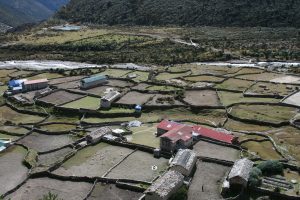
By 2010, a once-expanding infrastructure built by foreign assistance was crumbling: roads, government offices, clinics, schools, postal services, agriculture extension services, even tax collection. An increasingly corrupt government system could not maintain infrastructure that aid had built. Ancient divisions of caste and tribe persisted, crippling social advancement as half of the national population, women, still were only symbolically included in decision making.
In contrast to the failures of traditional development efforts, Nepal has had substantial success in local, community-based development efforts – though these have not been extensive enough to lift the entire country out of poverty and they have received far less support from both the Nepali government and external donors than traditional development efforts. Many of these efforts are ongoing.
Nepal is filled with such examples [of community based development]: community-based clinics and schools, forests, microcredit schemes, and water supply systems. Even more persuasive proof of people’s energies are the thousands of trails, temples, village waterspouts, and herculean terraces built without any external assistance… Another example of the diffuse, emergent manner in which the people pulled themselves forward lies in Nepal’s ecotourism industry.
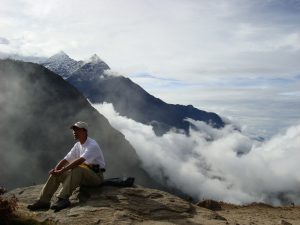
But these successes, outside of several select cases such as eco-tourism, have not been able to scale-up and are limited to local, grassroots initiatives.
Nepal is perhaps unusual in that although it has a record of failed traditional development – as many countries do – it simultaneously has a record of successful community based development which many countries do not.
Nepalis knows how to lift themselves out of poverty and advance their development.
SEED-SCALE has been well demonstrated in Nepal in a variety of contexts – from community-based road and bridge building efforts that have been high quality and extremely cost effective – with lasting benefit expanding trade and enabling improved travel for access to healthcare and markets to sell goods and services and produce grown in the countryside – to a sophisticated eco-tourism enterprise and range of extensive tourism related businesses incorporating tour guides, restaurants and hotels.
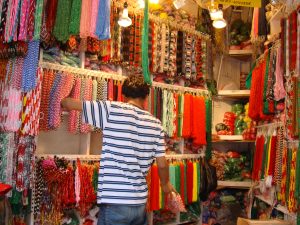
Many Nepalis have adapted to the opportunities provided by tourism to increase their income and use that income to improvetheir quality of life through better healthcare, housing, and educational opportunity.
While many of these programs have not been able to expand beyond largely localized programs, if the Nepali government on the national and regional level and foreign donors and aid agencies learn from the mistakes of the past and build on the successes of SEED-SCALE, Nepal will be able to advance its own development sustainably and successfully.
Then the community development that is currently taking place on a relatively small scale could eventually characterize the country as a whole for the better of all its citizens and contribute to equitable, expansive, participatory, and sustainable human development.
Development Series- Part II: Community Development from the Grassroots
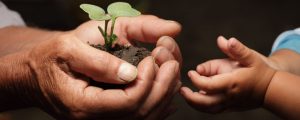
This week, we’re excited to announce that Professor Schimmel’s second post in the Development Series can be found on McGill University’s Centre for Human Rights & Legal Pluralism blog! Follow the link below to read his assessment on how the SEED-SCALE theory of social change can benefit the larger field of development.
https://www.mcgill.ca/humanrights/article/community-development-grassroots
Development Series- Part I: SEED-SCALE in Cities: Curitiba, Brazil
Summary from Just and Lasting Change by Associate Professor, Noam Schimmel

Patterns of human settlement are becoming increasingly urban and with these changes come both challenges and opportunities to advance human development.
Community-based Conservation
JULIE MALDONADO

JULIE MALDONADO
Assistant Professor
Education
- BA Washington University (Psychology)
- MA American University (Public Anthropology)
- PhD American University (Anthropology)
Books:
- Maldonado, JK. 2018. Seeking Justice in an Energy Sacrifice Zone: Standing on Vanishing
Land in Coastal Louisiana. London/New York Routledge Press. - Cernea, M and JK Maldonado. 2018. Challenging the Prevailing Displacement and Resettlement Paradigm: Risks, Impoverishment, Legacies, and Solutions. London/New York Routledge Press.
- Maldonado, JK, R Pandya, and B Colombi, eds. 2014. Climate Change and Indigenous Peoples in the United States: Impacts, Experiences and Actions. Cham, Switzerland, Springer Publishing International. Reprinting of Maldonado, JK, R Pandya, and B Colombi, eds. 2013. Climate Change and Indigenous Peoples in the United States: Impacts, Experiences and Actions. Climatic Change 120(3).
Journal Articles:
- Maldonado, JK. 2016. Considering Culture in Disaster Practice. Annals of Anthropological Practice. AJ Faas, editor, Special Issue.
- Maldonado, JK, B Taylor, and M Hufford. 2016. The Livelihoods Knowledge Exchange Network: Grow Where You Are. Practicing Anthropology, Special Issue: Activism, Agency and Engagement with Extraction, J Simonelli and S Fiske, co-editors. 38(3).
- Maldonado, JK, TMB Bennett, K Chief, P Cochran, K Cozzetto, B Gough, MH Redsteer, K Lynn, N Maynard, G Voggesser. 2016. Engagement With Indigenous Peoples and Honoring Traditional Knowledge Systems. Climatic Change 135: 111-126.
- Maldonado, JK. 2014. A Multiple Knowledge Approach for Adaptation to Environmental Change: Lessons Learned from Coastal Louisiana’s Tribal Communities. Journal of Political Ecology 21: 61-82.
- Maldonado, JK, C Shearer, R Bronen, K Peterson and H Lazrus. 2013. The Impact of Climate Change on Tribal Communities in the US: Displacement, Relocation, and Human Rights. Climatic Change 120(3): 601-614.
- Maldonado, JK. 2012. A New Path Forward: Researching and Reflecting on Forced Displacement and Resettlement. Report on the International Resettlement Conference: Economics, Social Justice, and Ethics in Development-Caused Involuntary Migration, The Hague, 4-8 October 2010. Journal of Refugee Studies 25(2): 193-220.
Book Chapters:
- Maldonado, JK and K Peterson. 2018. A Community-based Model for Resettlement: Lessons from Coastal Louisiana. In The Routledge Handbook of Environmental Displacement and Migration. R McLeman and F Gemenne, eds. Routledge Press.
- Hiza Redsteer, M, I Krupnik, and JK Maldonado. Forthcoming. Native American Communities and Climate Change. In Handbook of North American Indians. Vol. 1 – Introduction. Igor Krupnik, ed. Washington, DC: Smithsonian Institution Scholarly Press.
- Maldonado, JK. 2017. Corexit to Forget It: The Transformation of Coastal Louisiana into an Energy Sacrifice Zone. In ExtrACTION: Impacts, Engagements and Alternative Futures. K Jalbert, A Willow, S Paladino, and D Casagrande, eds. London/New York: Routledge Press.
- Maldonado, JK. 2016. The Practical and Policy Relevance of Social Network Analysis for Disaster Response, Recovery and Adaptation. In Social Network Analysis in Disaster Response, Recovery, and Adaptation. E Jones and AJ Faas, eds. Pp. 255-268. Elsevier.
- Maldonado, JK, H Lazrus, B Gough, SK Bennett, K Chief, C Dhillon, L Kruger, J Morisette, S Petrovic, K Whyte. 2016. The Story of Rising Voices: Facilitating Collaboration between Indigenous and Western Ways of Knowing. In Responses to Disasters and Climate Change: Understanding Vulnerability and Fostering Resilience. MCompanion and M Chaiken, eds. Boca Raton, FL: CRC Press.
- Peterson, KJ and JK Maldonado. 2016. When Adaptation is Not Enough: Between Now and Then of Community-led Resettlement. In Anthropology and Climate Change, 2nd edition. S Crate and M Nuttall, eds. London/New York: Routledge Press.
- Maldonado, JK, AP Naquin, T Dardar, S Parfait-Dardar and B Bagwell. 2015. Above the Rising Tide: Coastal Louisiana’s Tribal Communities Apply Local Strategies and Knowledge to Adapt to Rapid Environmental Change. In Disasters’ Impact on Livelihood and Cultural Survival: Losses, Opportunities, and Mitigation. M Companion, ed. Pp. 239-253. Boca Raton, FL: CRC Press.
Reports:
- Gonzalez, P, G Garfin, D Breshears, K Brooks, H Brown, E Elias, A Gunasekara, N Huntly, J Maldonado, N Mantua, H Margolis, S McAfee, and BR Middleton (forthcoming, 2018) Chapter 25 “Southwest.” In Fourth National Climate Assessment, Volume II: Impacts, Risks, and Adaptation in the United States. US Global Change Research
Program. - Maldonado, J and K Cozzetto. 2018. Gila River Indian Community Climate Adaptation and Resiliency Project: Workshop Series Summary Report.
- Maldonado, J, N Cooley, and K Cozzetto. 2018. Navajo Nation Climate Change Adaptation Planning Workshop: Establishing Natural Resource Priorities. Summary
Report. - Cozzetto K, J Maldonado, S Fluharty, J Hostler, C Cosby. 2018. Yurok Tribe Climate Change Adaptation Plan for Water and Aquatic Resources. 1 Institute for Tribal Environmental Professionals (ITEP), Northern Arizona University, Flagstaff, AZ. 2 Yurok Tribe Department of Environmental Quality (YTEP), Klamath, CA.
- Powell, D and J Maldonado, eds. 2017. Just Environmental and Climate Pathways: Knowledge Exchange Among Community Organizers, Scholar-Activists, Citizen- Scientists and Artists. Workshop report. Society for Applied Anthropology Annual Meeting. 28 March 2017. Santa Fe, New Mexico. http://likenknowledge.org/wp-content/uploads/2018/02/Climate-Pathways-Workshop-Report_Santa-Fe_March-2017.pdf
- Bennett, TM B, NG Maynard, P Cochran, R Gough, K Lynn, J Maldonado, G Voggesser, S Wotkyns, and K Cozzetto. 2014. Ch. 12: Indigenous Peoples, Lands, and Resources. In Climate Change Impacts in the United States: The Third National Climate Assessment. JM Melillo, TC Richmond, and GW Yohe, eds. Pp. 297-317. U.S. Global Change Research Program. http://nca2014.globalchange.gov

